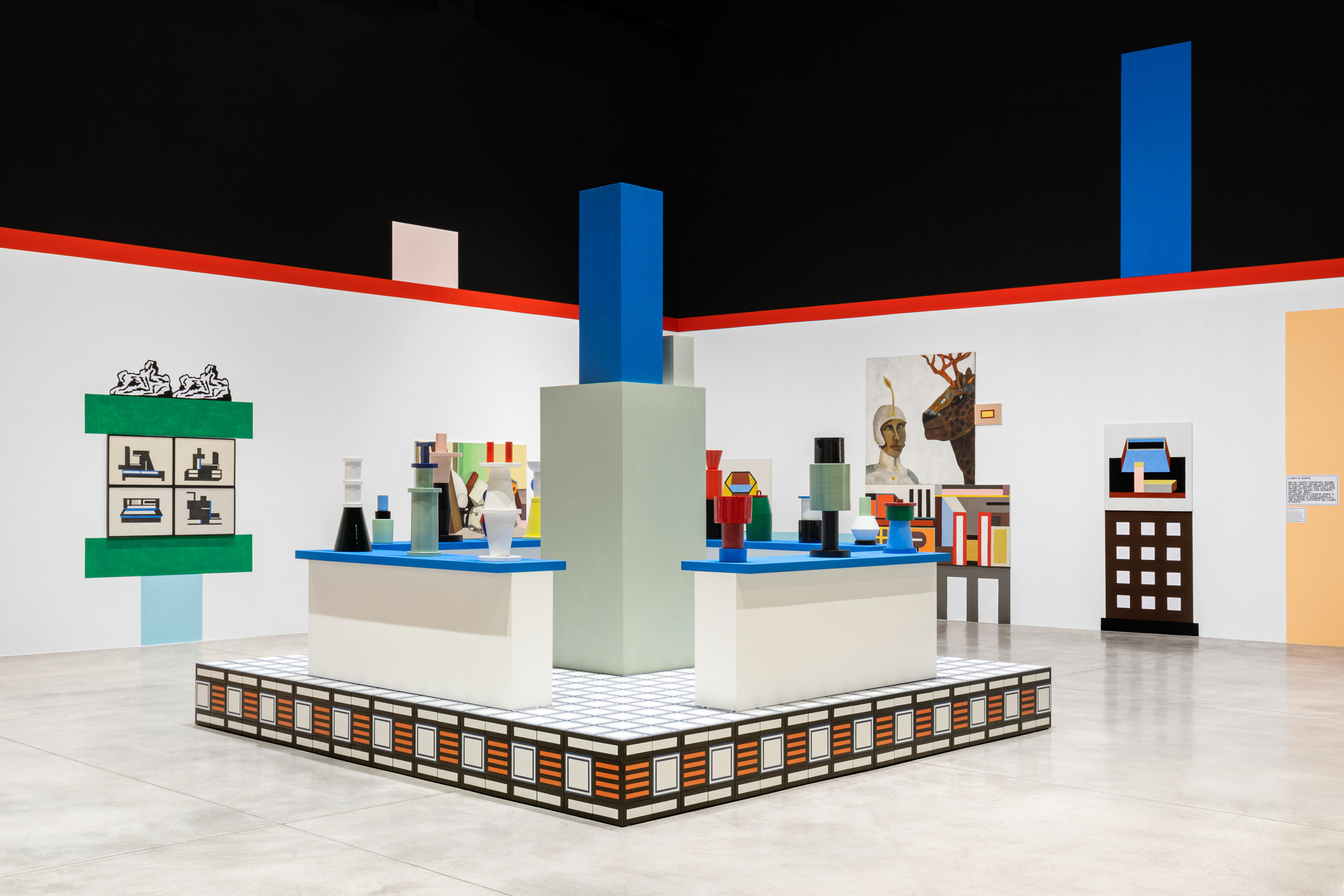
Installation view, Campo di Marte, Museo Macro, Rome (Italy), 2021
Nathalie Du Pasquier
May 12 ⏤ June 7, 2021
Highlighting the many dualities that make up Nathalie Du Pasquier’s compound practice, this viewing room brings together distinct aspects of her work. On the one hand, a series of abstract drawings comes with a clear rhythm — these drawings are imbued with a musicality expressed through difference and repetition. They are the result of Du Pasquier’s daily practice, and the painterly equivalent of a pianist practicing scales. On the other hand, a singular painting made in 1987 and recently reworked by the artist superposes her earlier figurative work with the colorful geometry of her current pictorial language. The expanded time instilled in this unique piece simultaneously points to the continuity and constant renewal that characterizes Nathalie Du Pasquier’s artistic research.
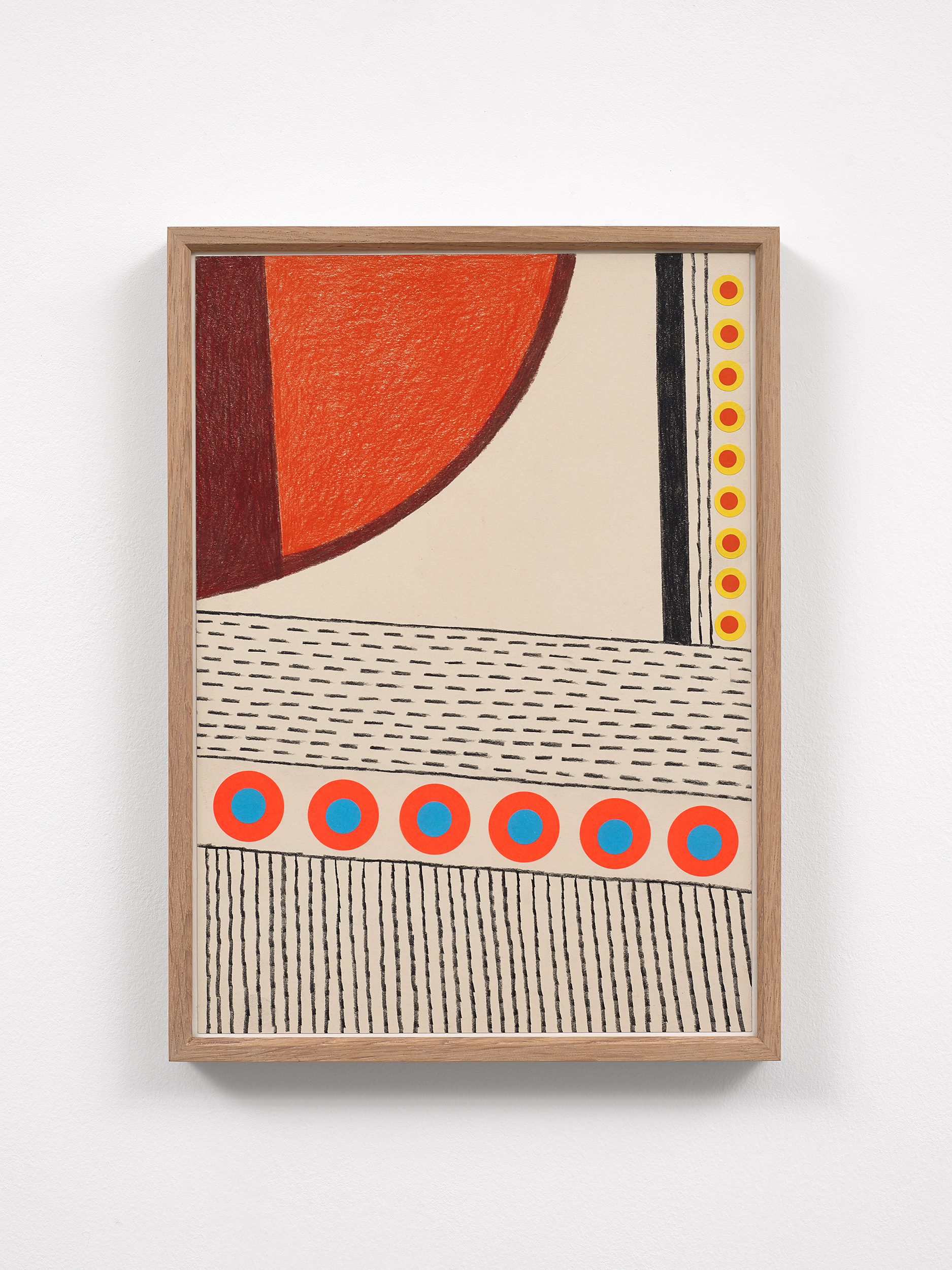
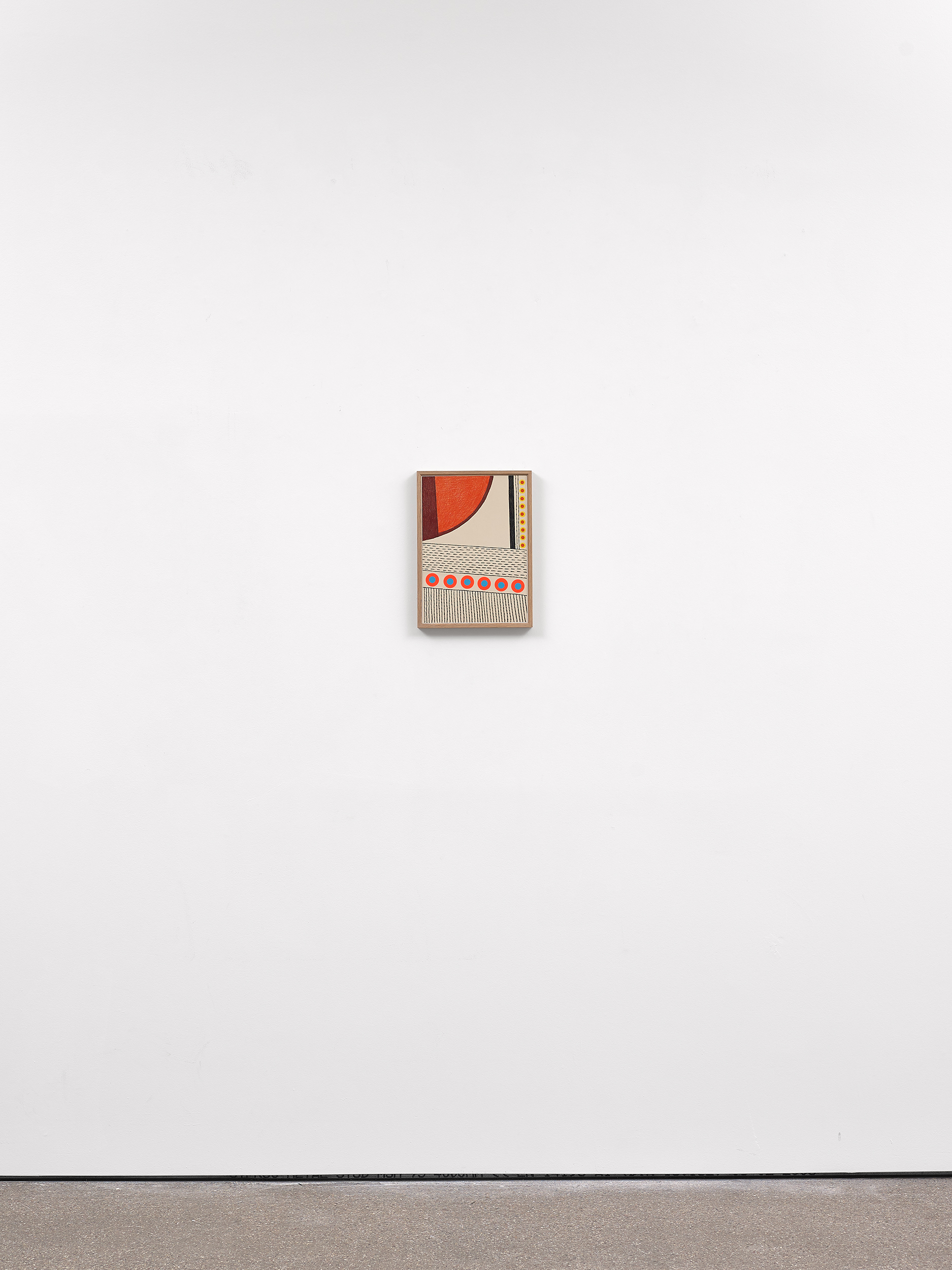

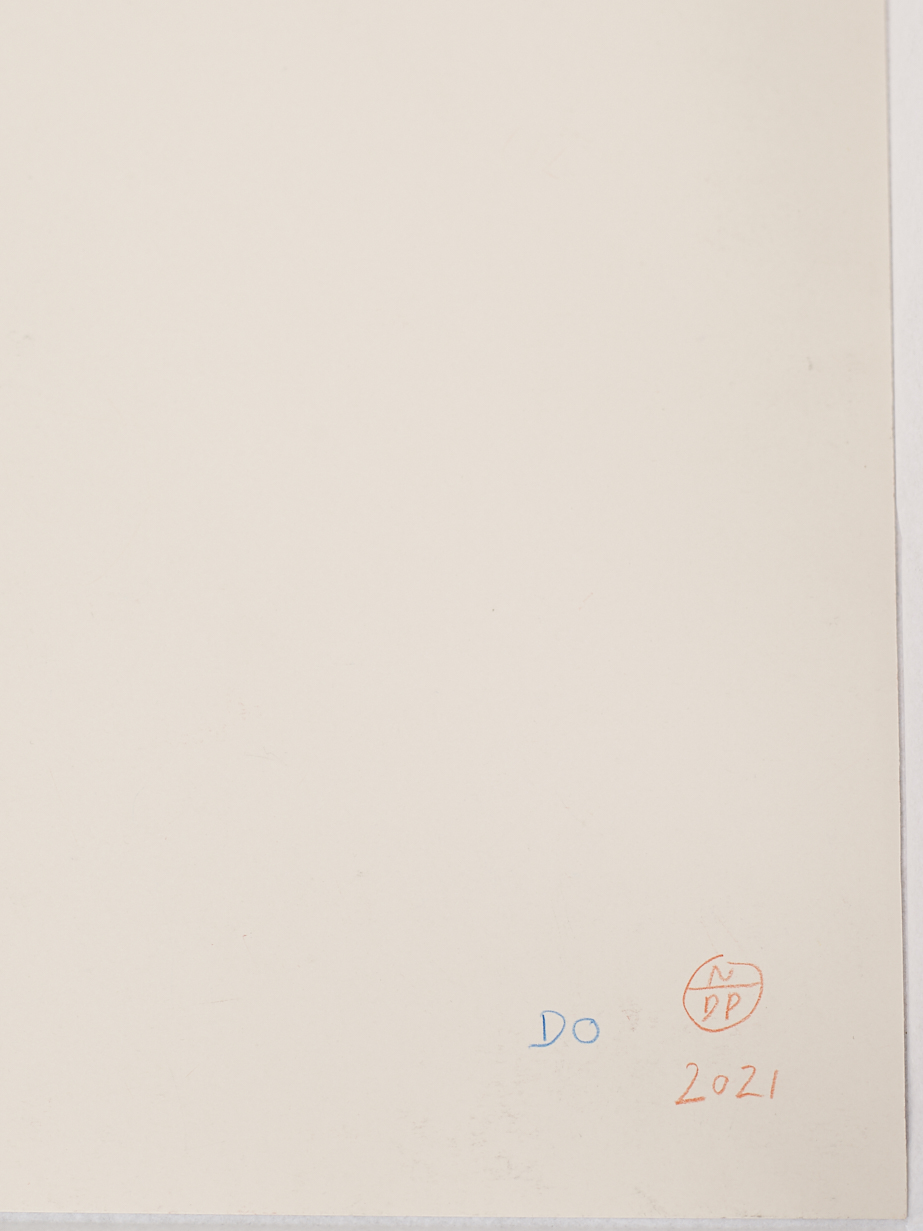
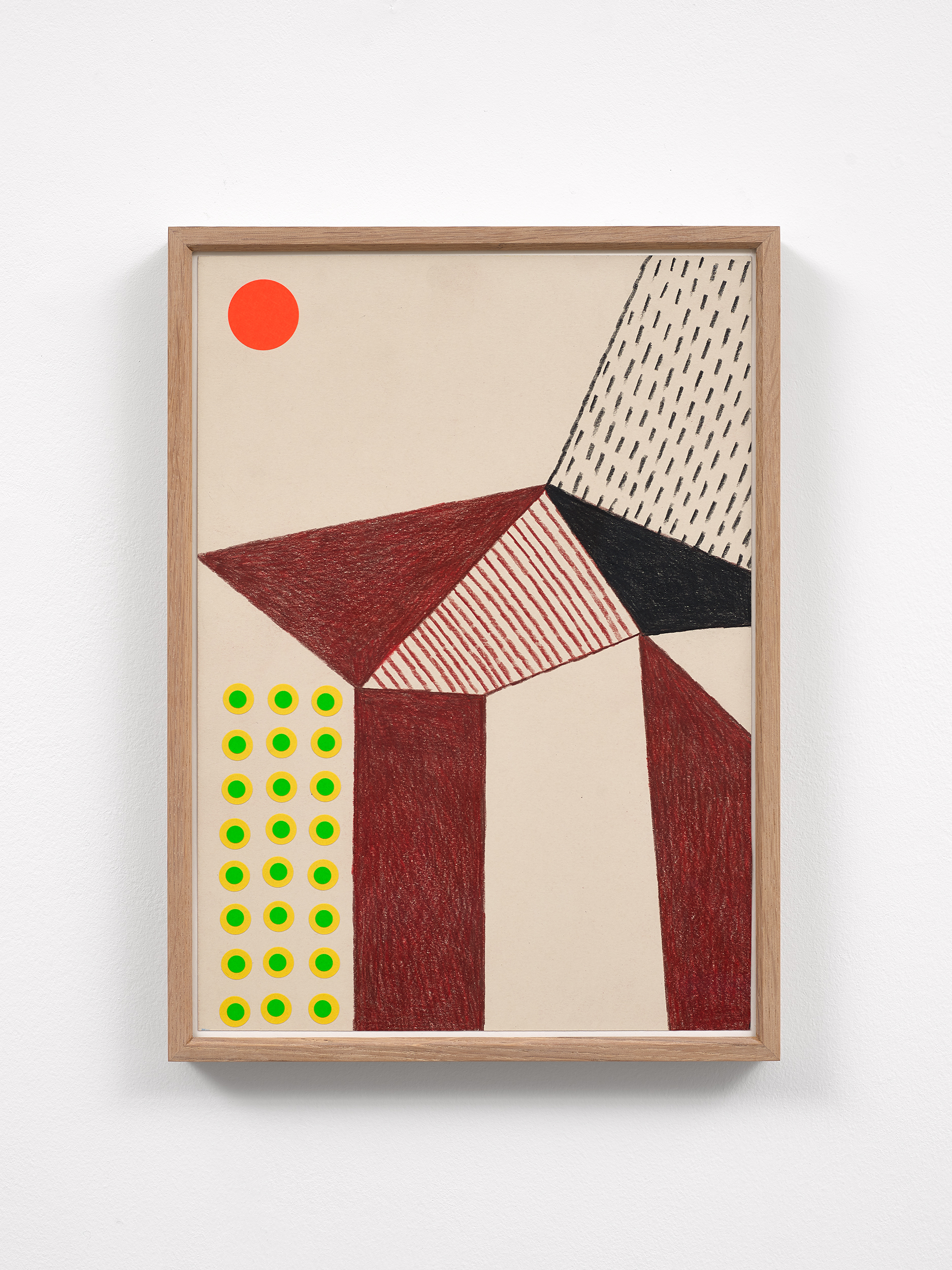
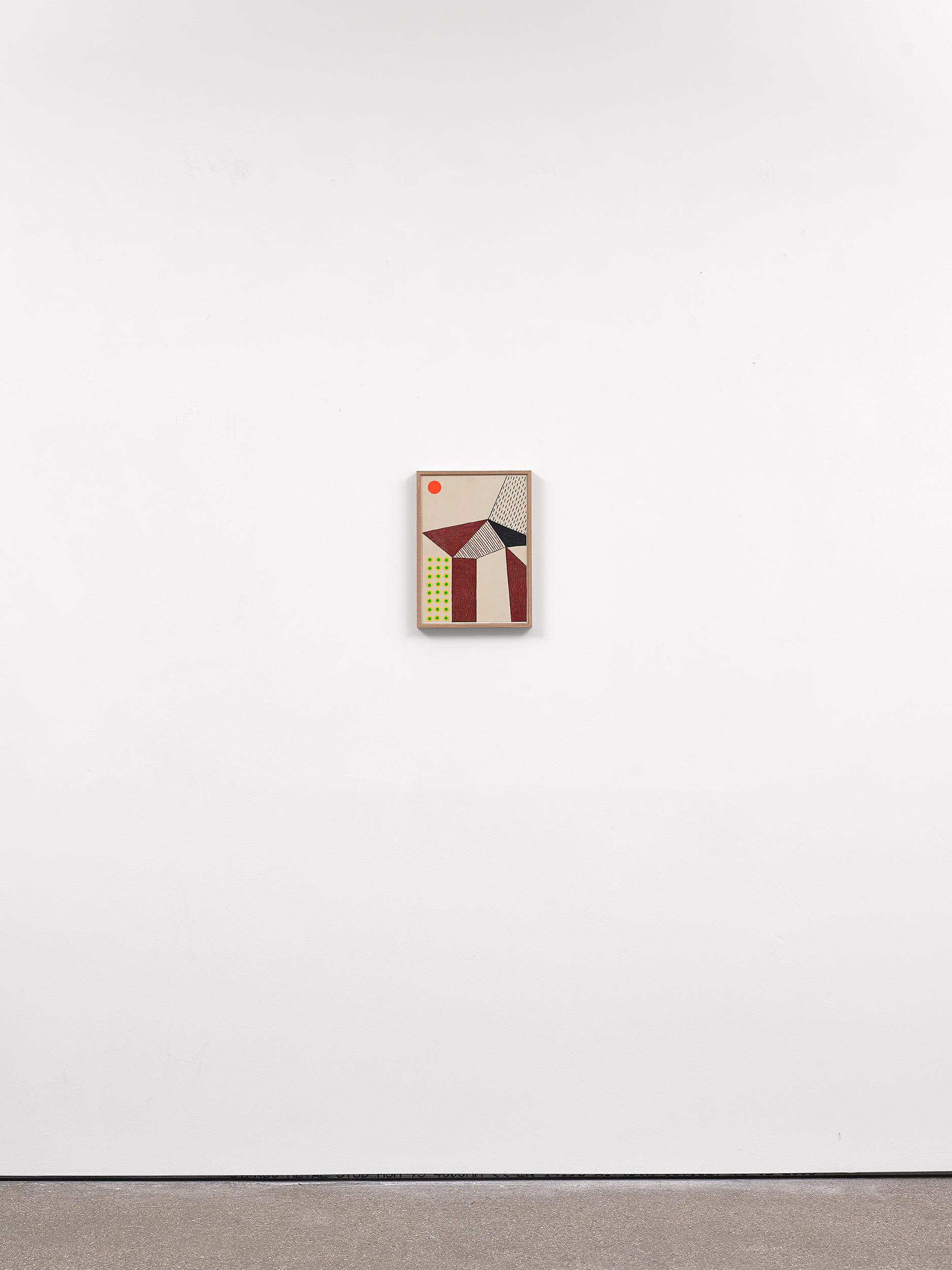

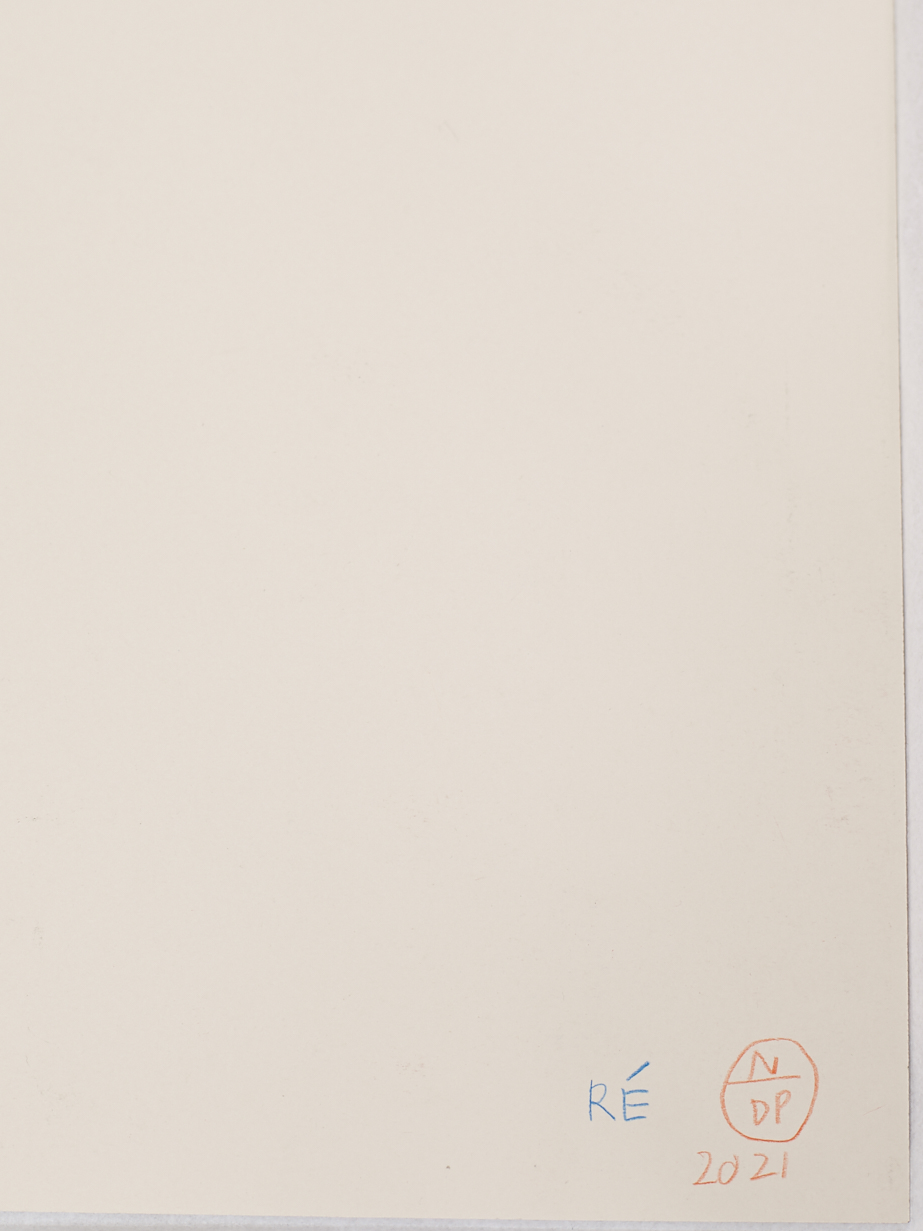


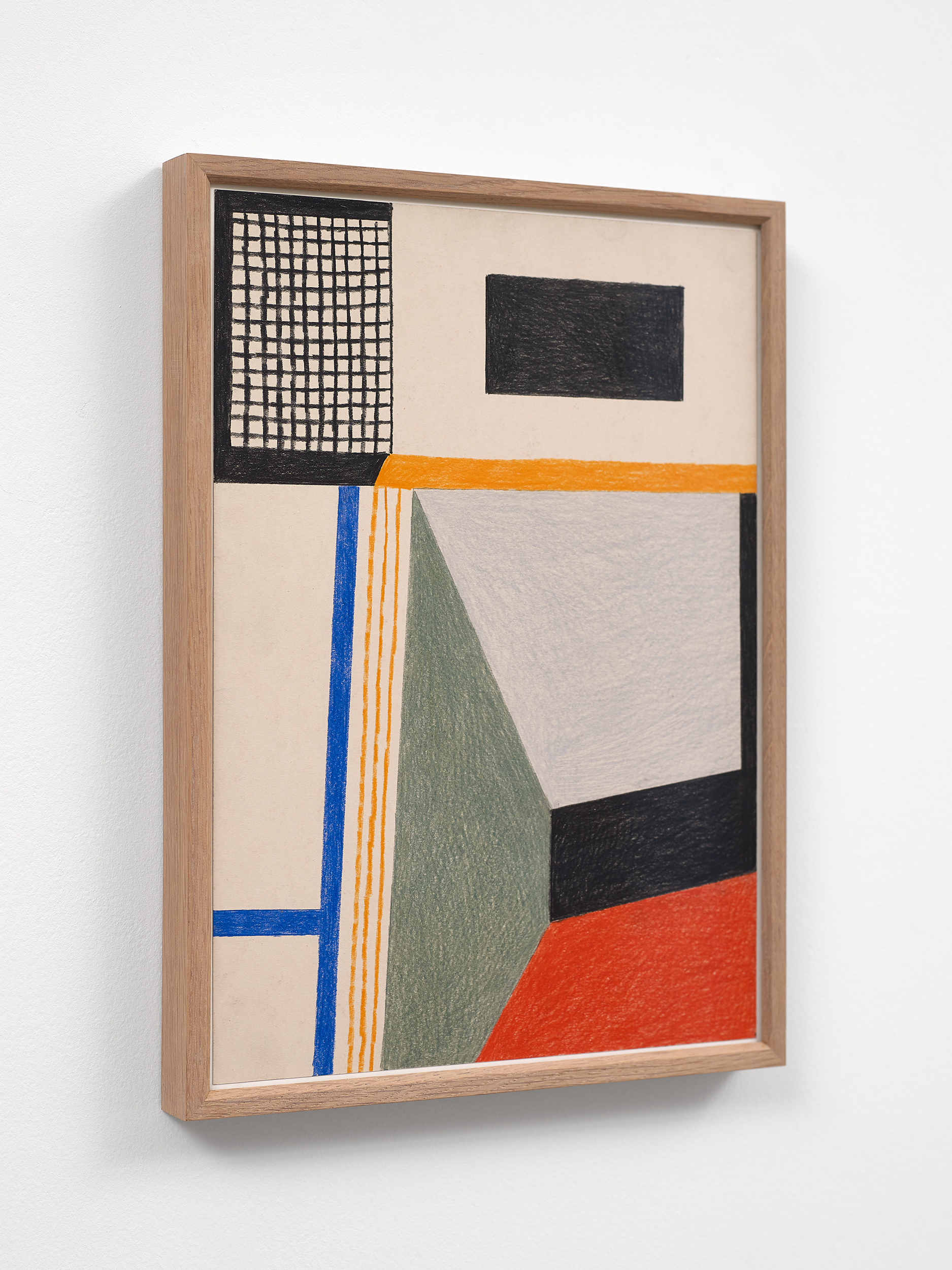
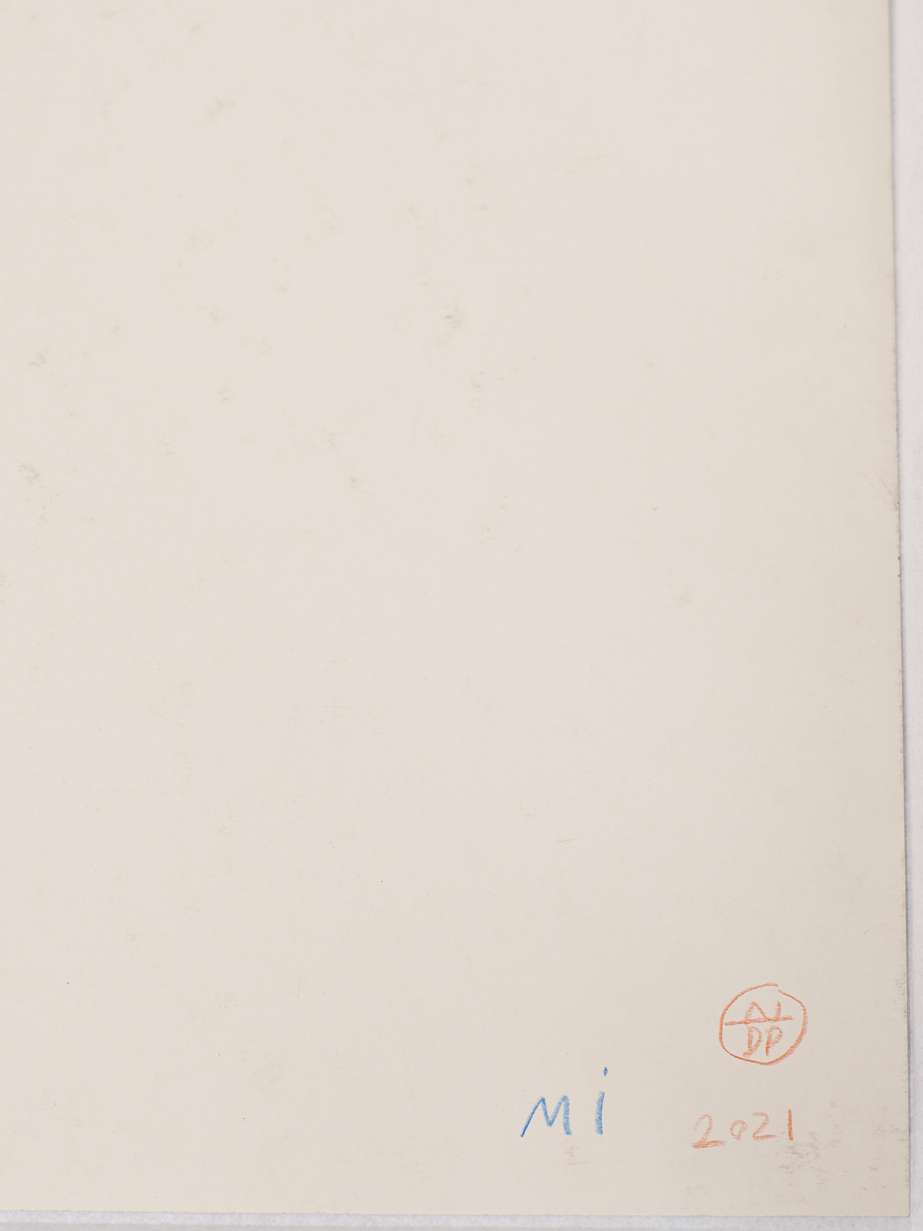


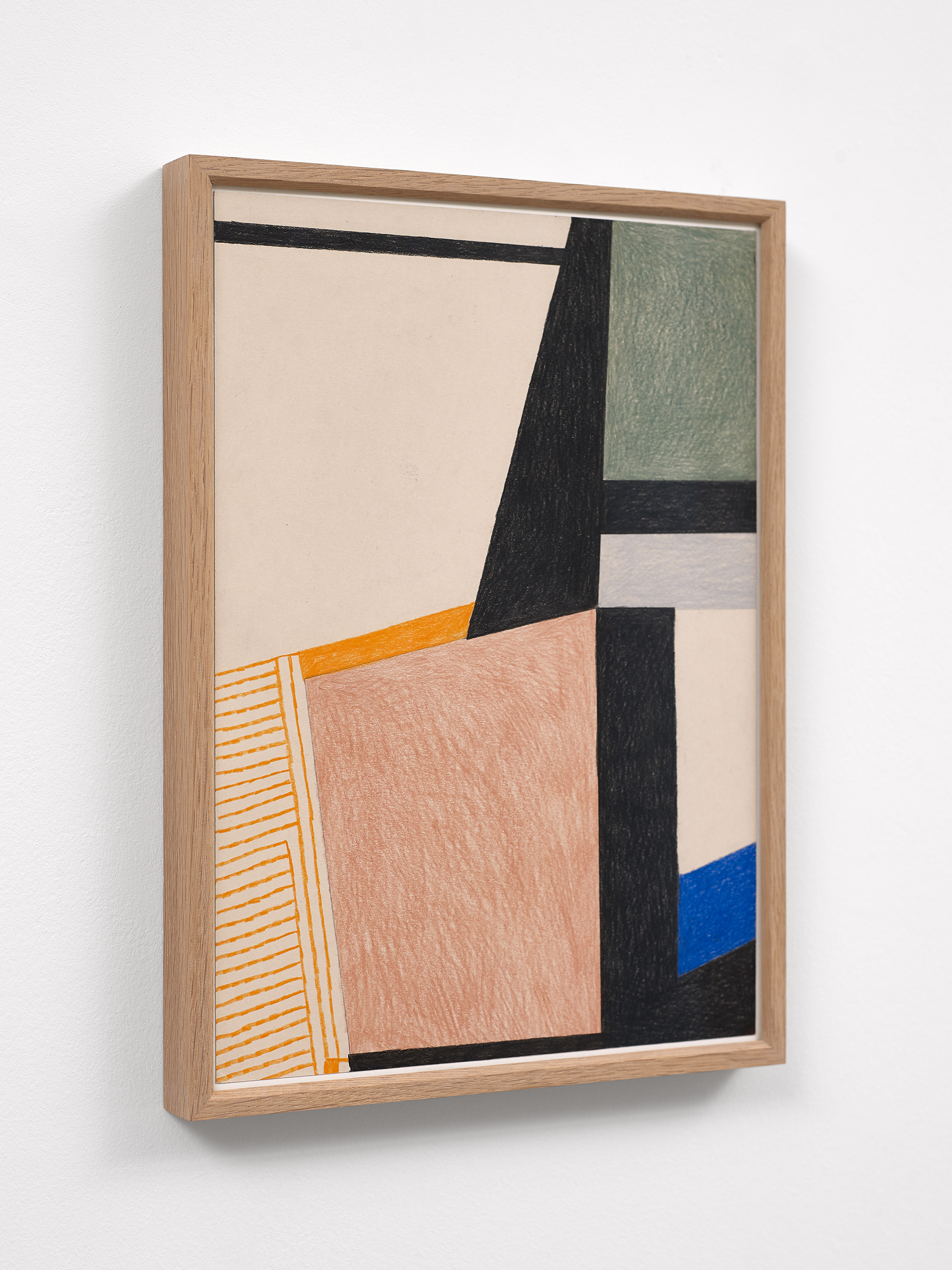

Nathalie Du Pasquier’s career began as an autodidact. She arrived in 1979 in Italy, first in Rome and then in Milan, where she still lives and works. She met several designers who set her along the path of European and urban 20th century culture. Du Pasquier is best known as one of the founding members of Memphis ⏤ the celebrated 1980s Italian postmodern design group. Du Pasquier first worked as a designer of textiles, furnitures and objects but since 1987, she subsequently decided to dedicate herself to painting. First focusing on still lives, the everyday objects depicted in her paintings were slowly replaced by wooden objects constructed by the artist herself. This was her pathway towards abstraction. Today, her work generates a dialogue between abstract painting and three-dimensional constructions arranged in space.

Nathalie Du Pasquier, Studio, Milano
When entering Nathalie Du Pasquier’s studio, you notice the strong contrast between the typical “Milanese” composite floor tiles and the bright white color of the walls. Two opposite visual systems, capable of coexisting. A “magma” floor that seems to contain the entire alphabet of the artist, and the “page” walls where it will then be placed in order. The organisation of the space itself is an extension of the visual structure of Nathalie, the sign of an innate naturalness with which art meets life.
Nathalies’ studio, which at first glance you’d prefer to call a laboratory or a workshop, is a vivid, accurate portrait of the artist. Her studio has a delightful smell of terpentine, wood and glue. The very physical side of constructing, gluing, attaching and painting, are traces of her inclination everywhere. Her studio is also full of “objets trouvés” of all sizes, pieces of wood, twine, tape, boxes, bottles, branches, leftovers or scraps of mysterious origin, alchemical ingredients …
Portrait of my sister as an artist ⏤ a film about Nathalie Du Pasquier by Judith Du Pasquier
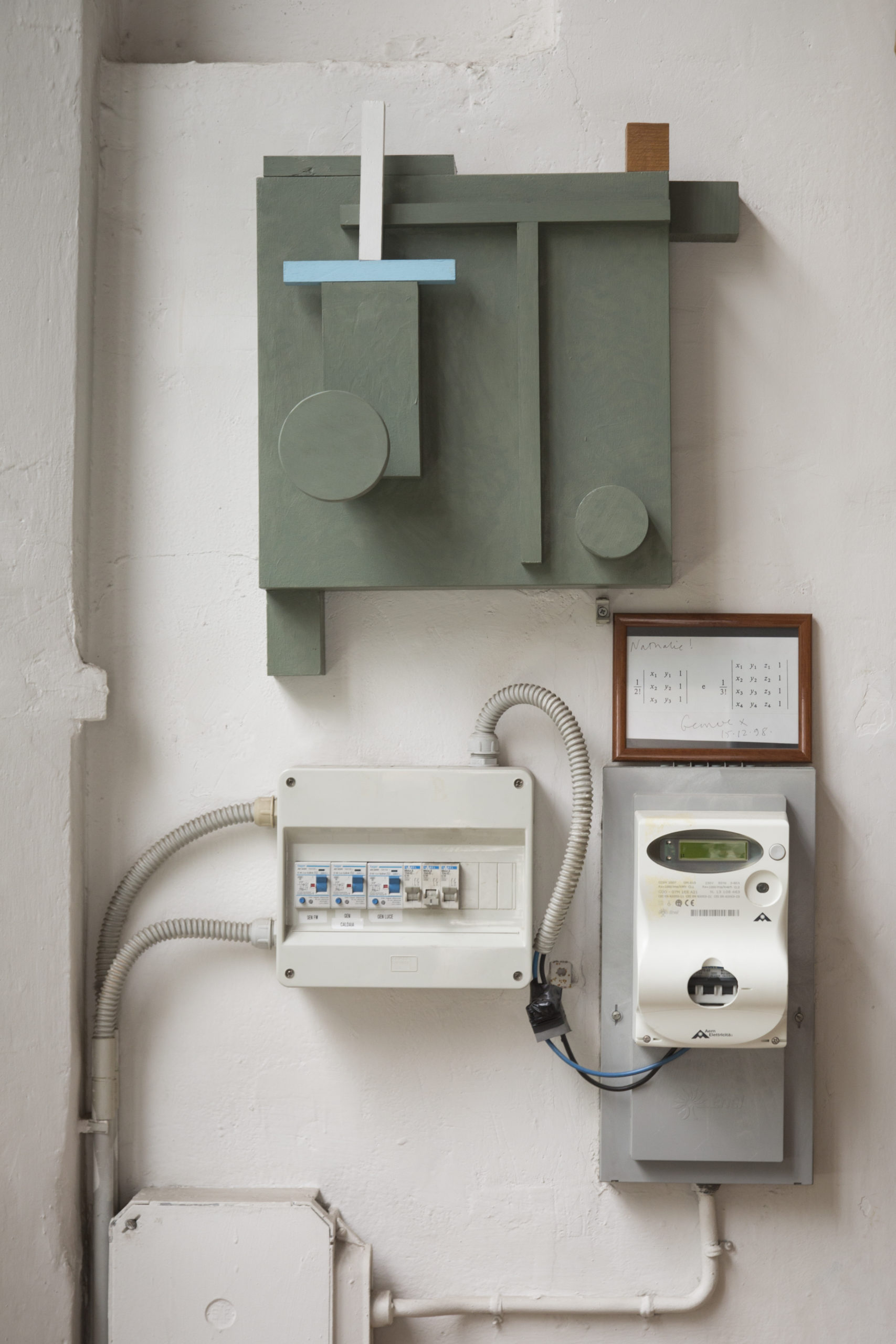
“I went to Italy by myself, ignorant, trying to find my own path. And somehow, after some hesitations, I slowly understood what I wanted to do with my life. This happened thanks to the people I met: George Sowden, Ettore Sottsass, the various designers I met during the early years in Milan, the city itself. I needed to work to make some money, so I jumped into the fay. Thanks to the designs I made for fabrics, I met special people, but I also understood what it meant to earn a living with your own work. This was great … I had always hoped it was possible, but I wasn’t sure I could achieve it.”
⏤ Nathalie Du Pasquier, “Conversation with Luco Lo Pinto” in Big objects not always silent, 2017, pg. 3.
⏤ Nathalie Du Pasquier, “Conversation with Luco Lo Pinto” in Big objects not always silent, 2017, pg. 3.
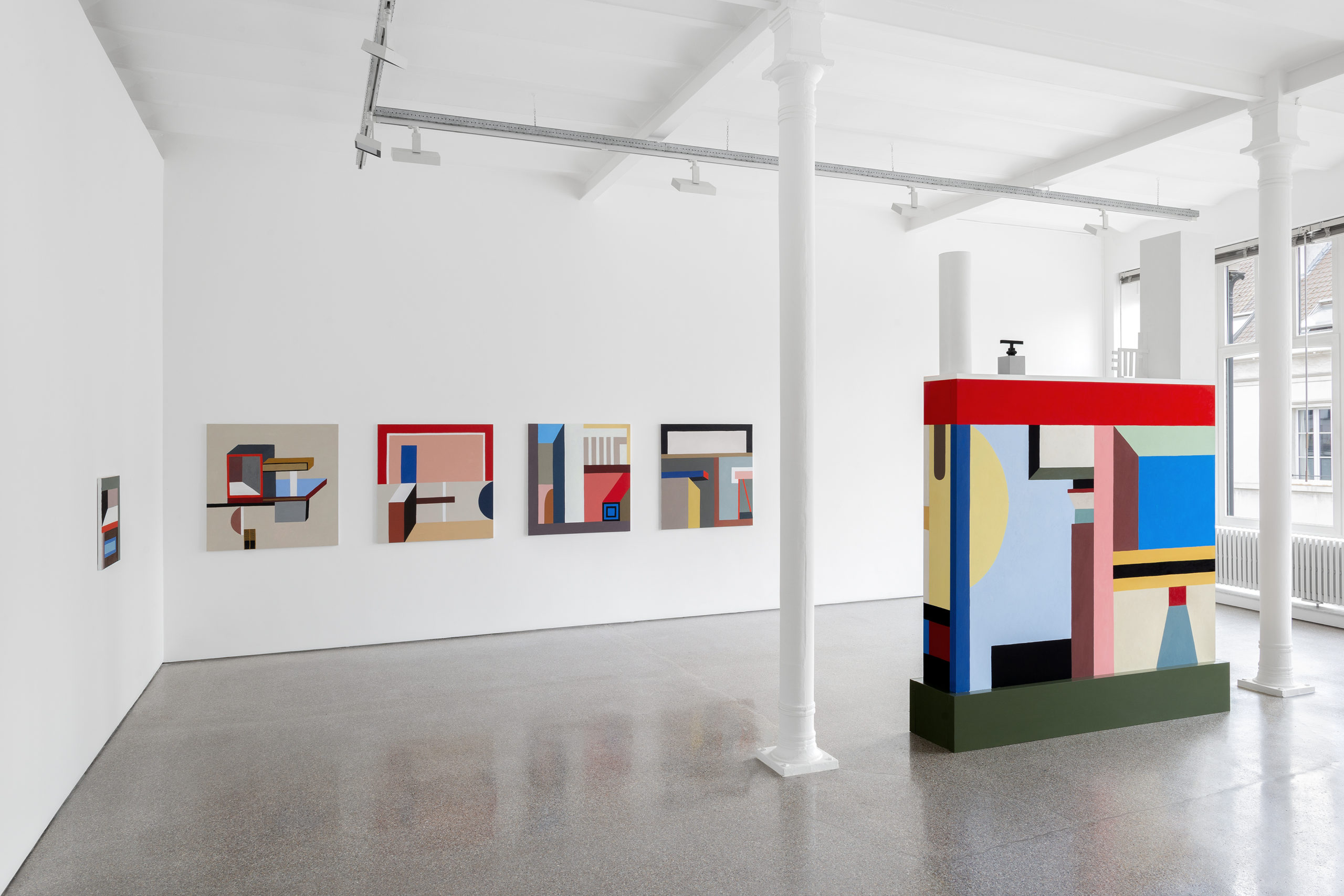
Installation view, No turning here!, Galerie Greta Meert, 2018
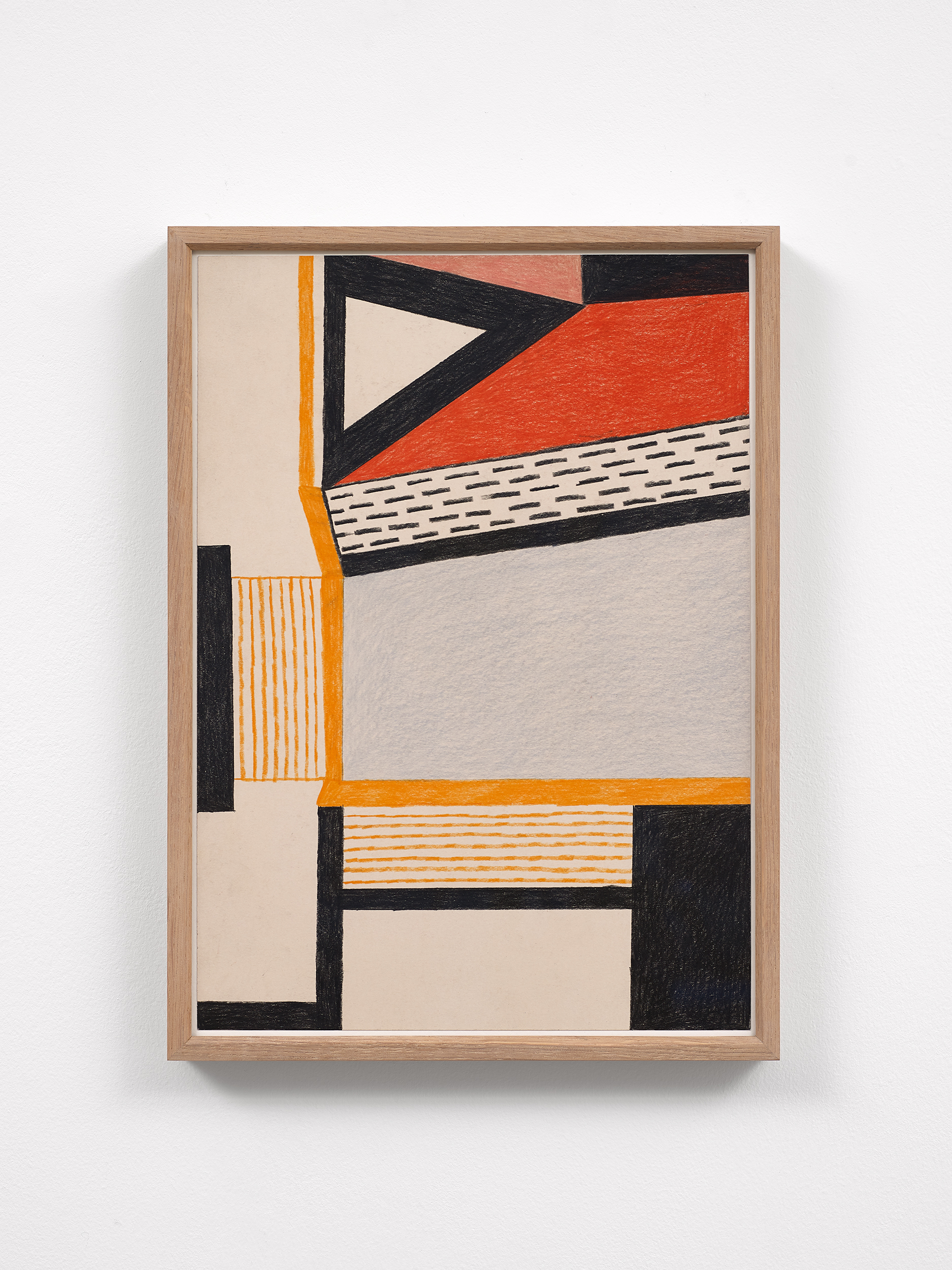
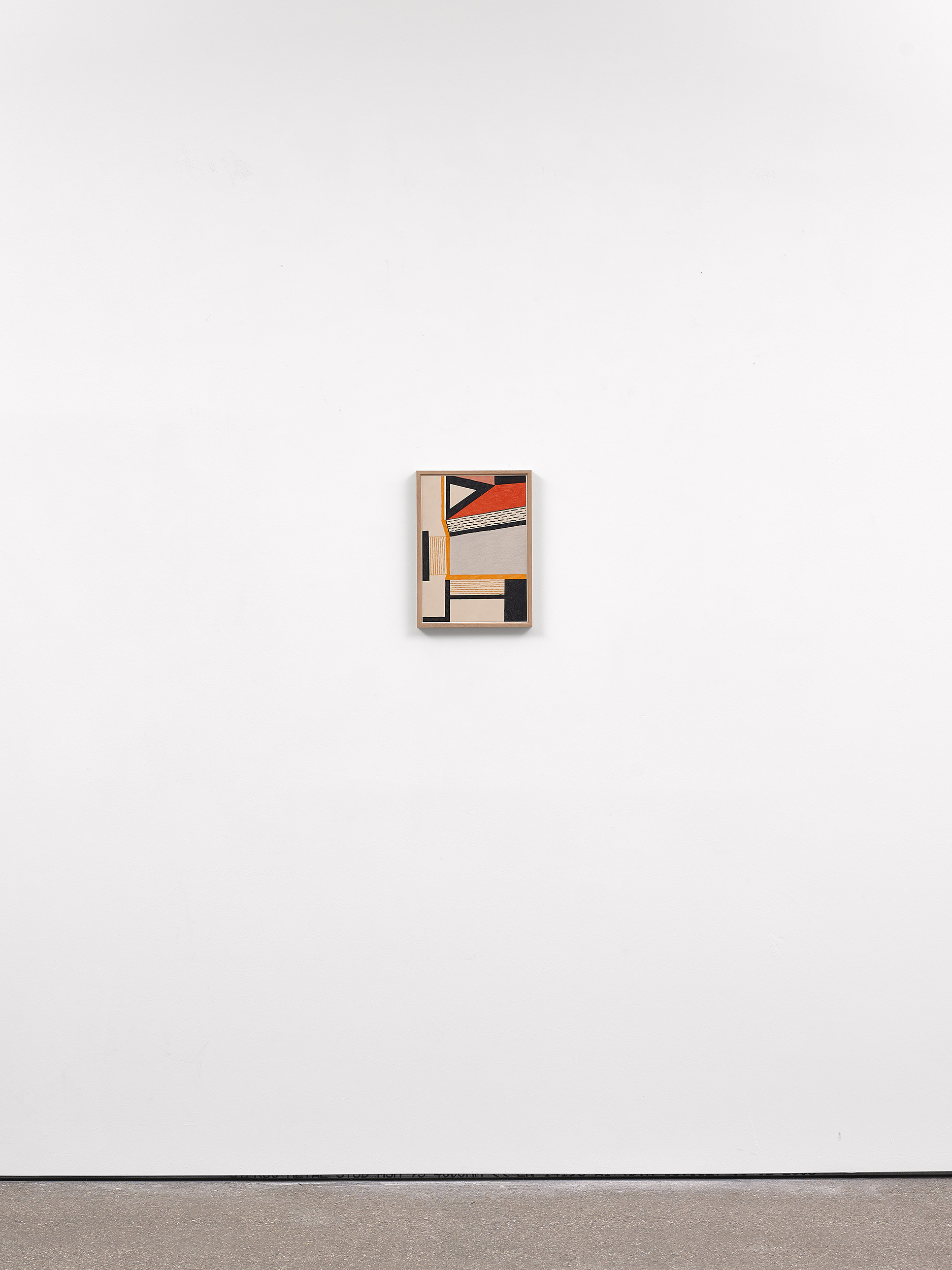
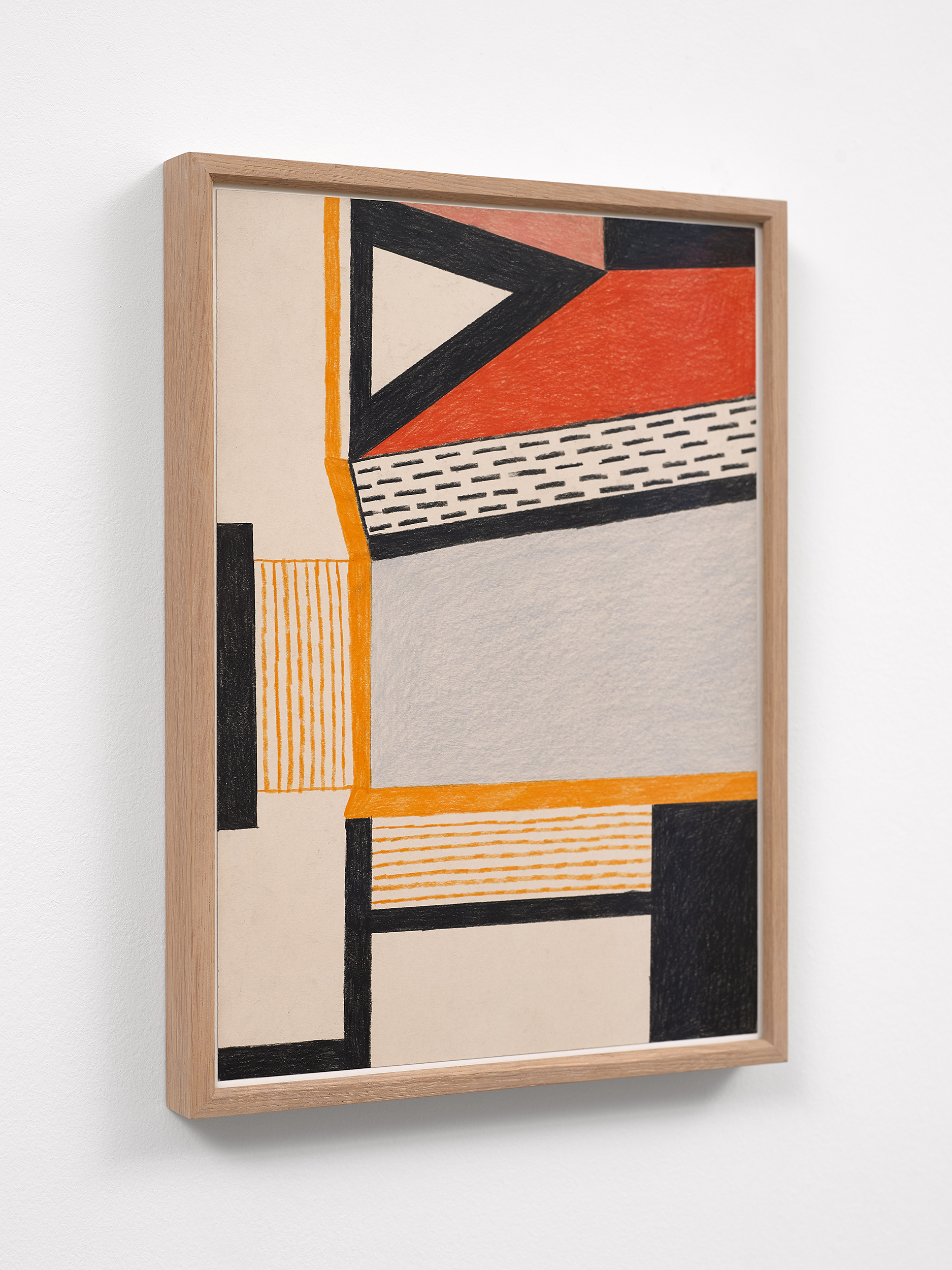
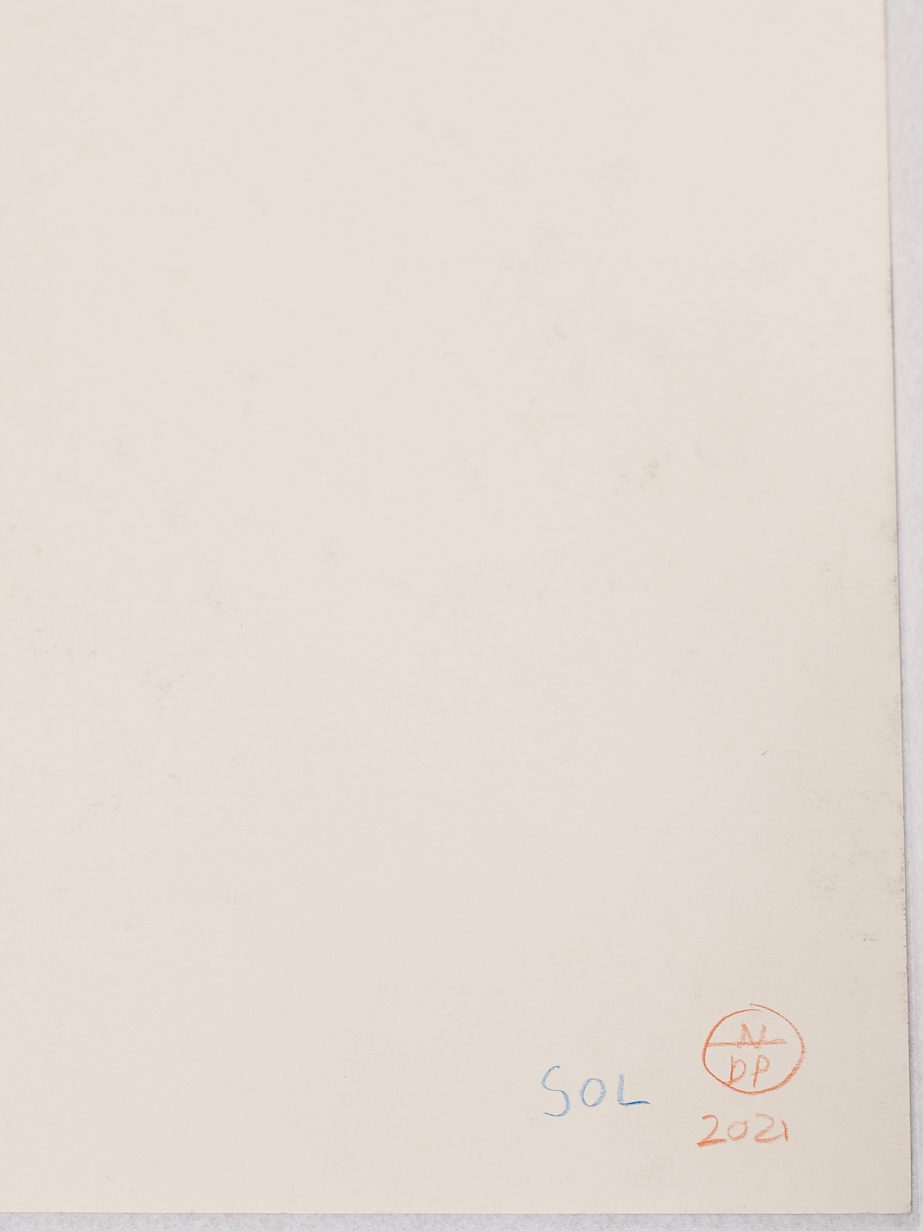
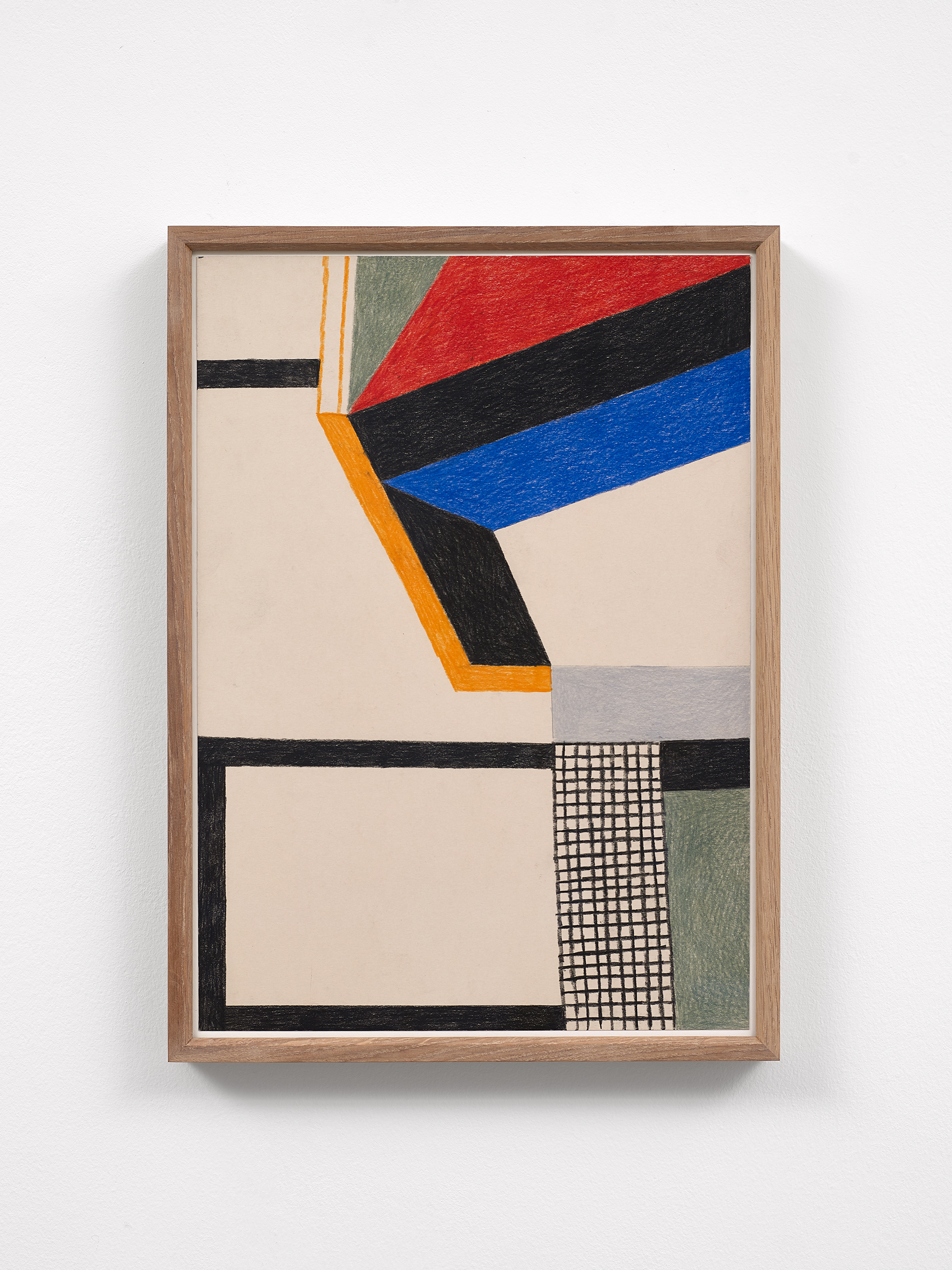



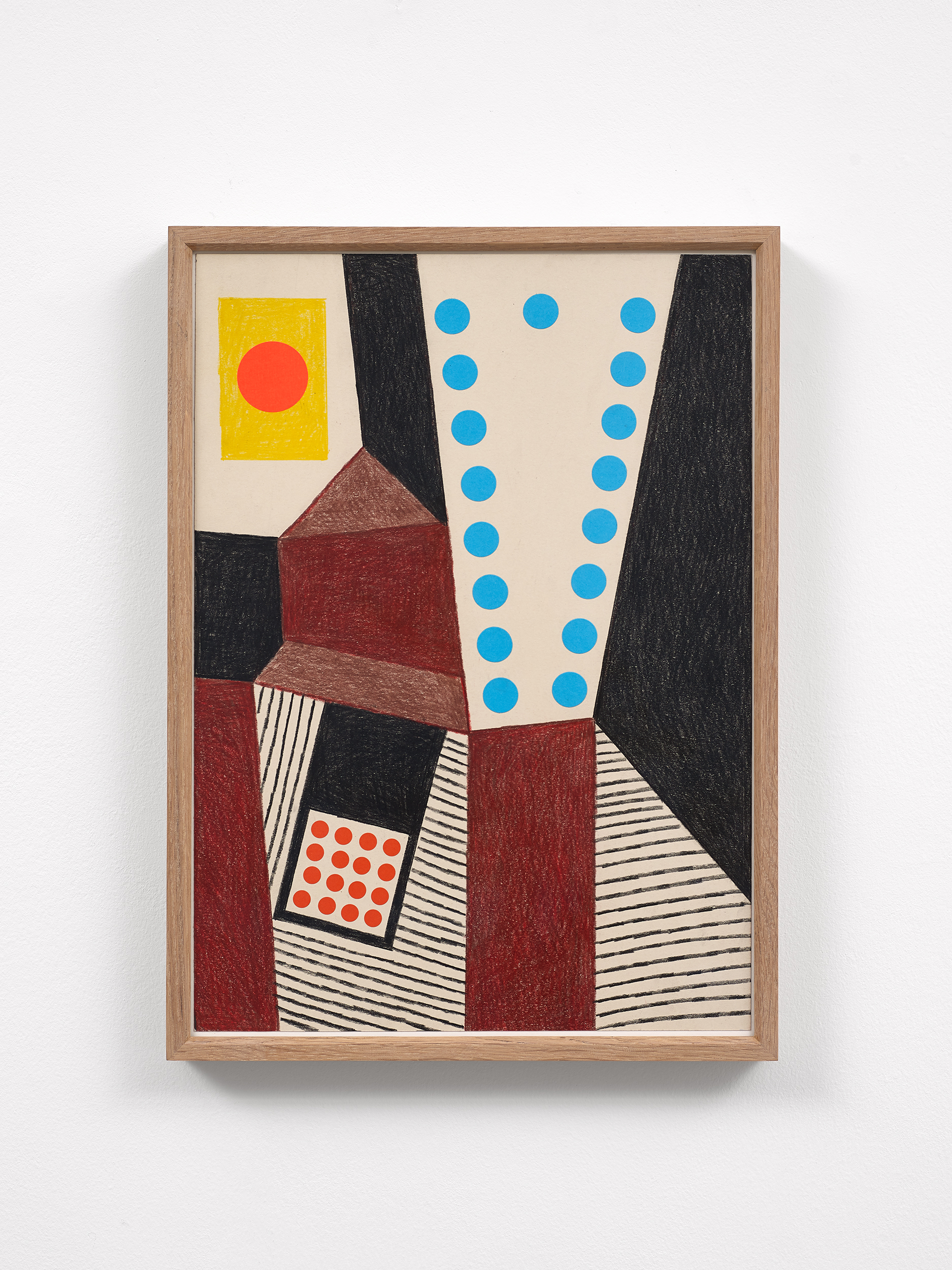
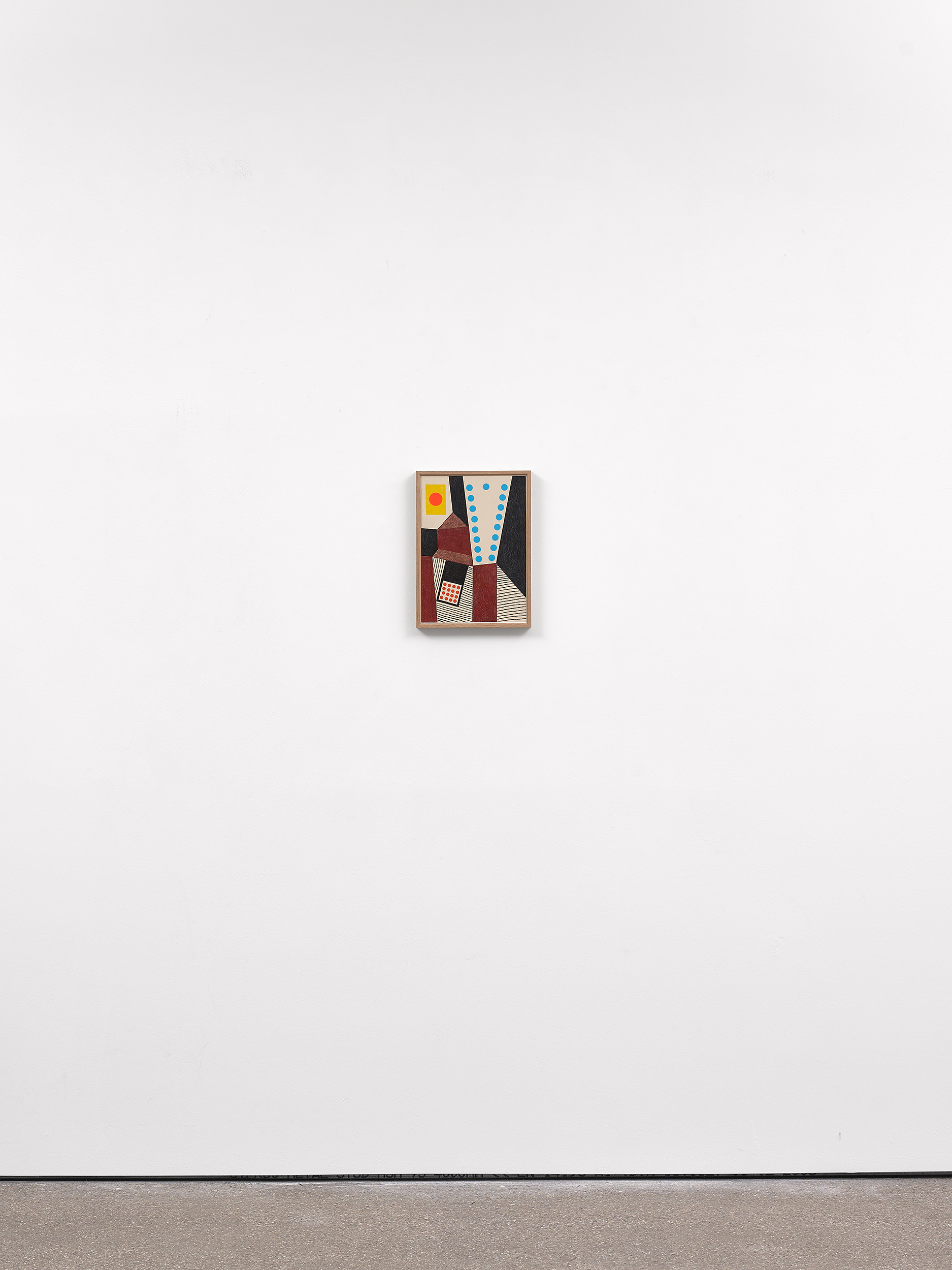
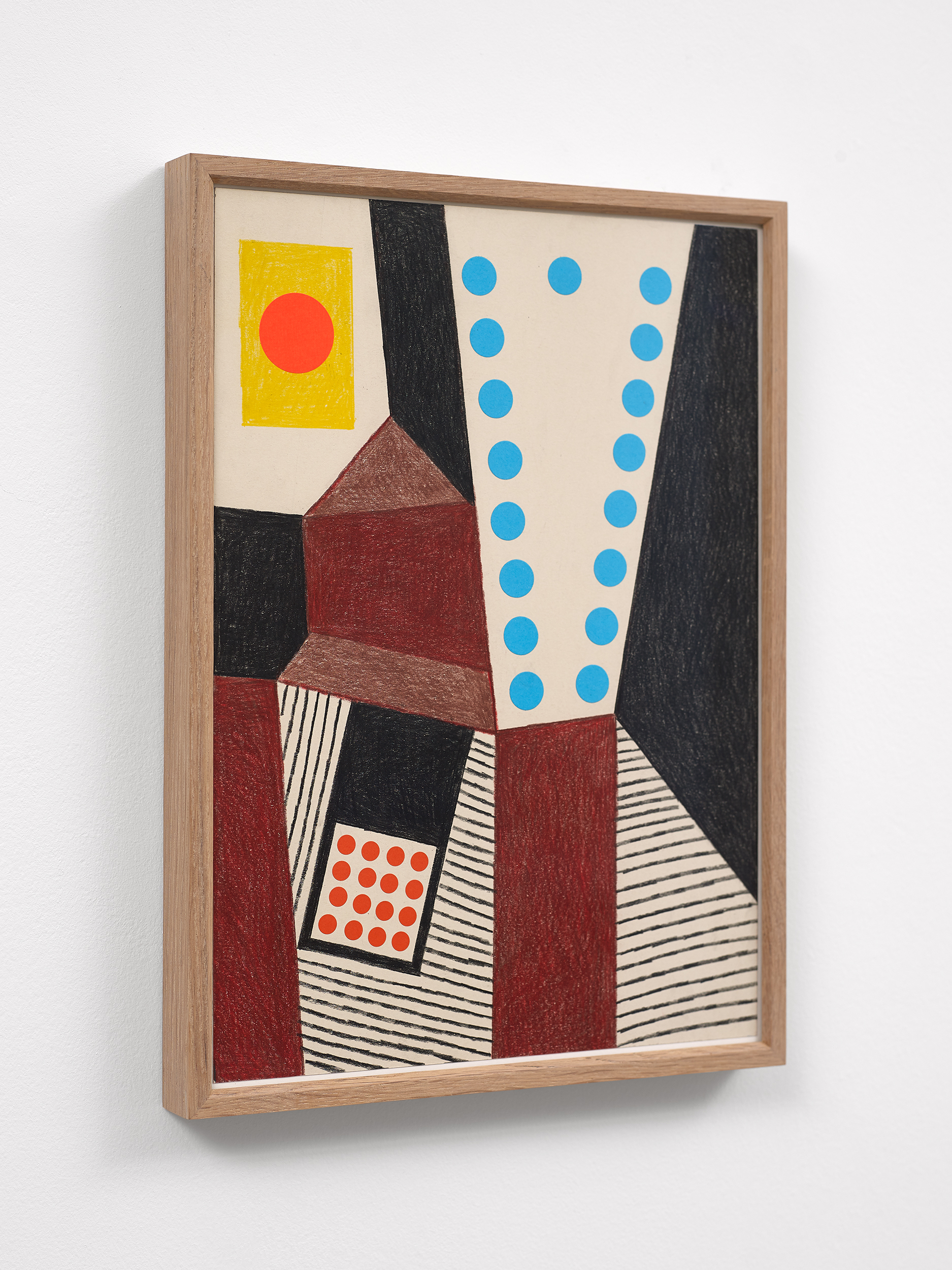

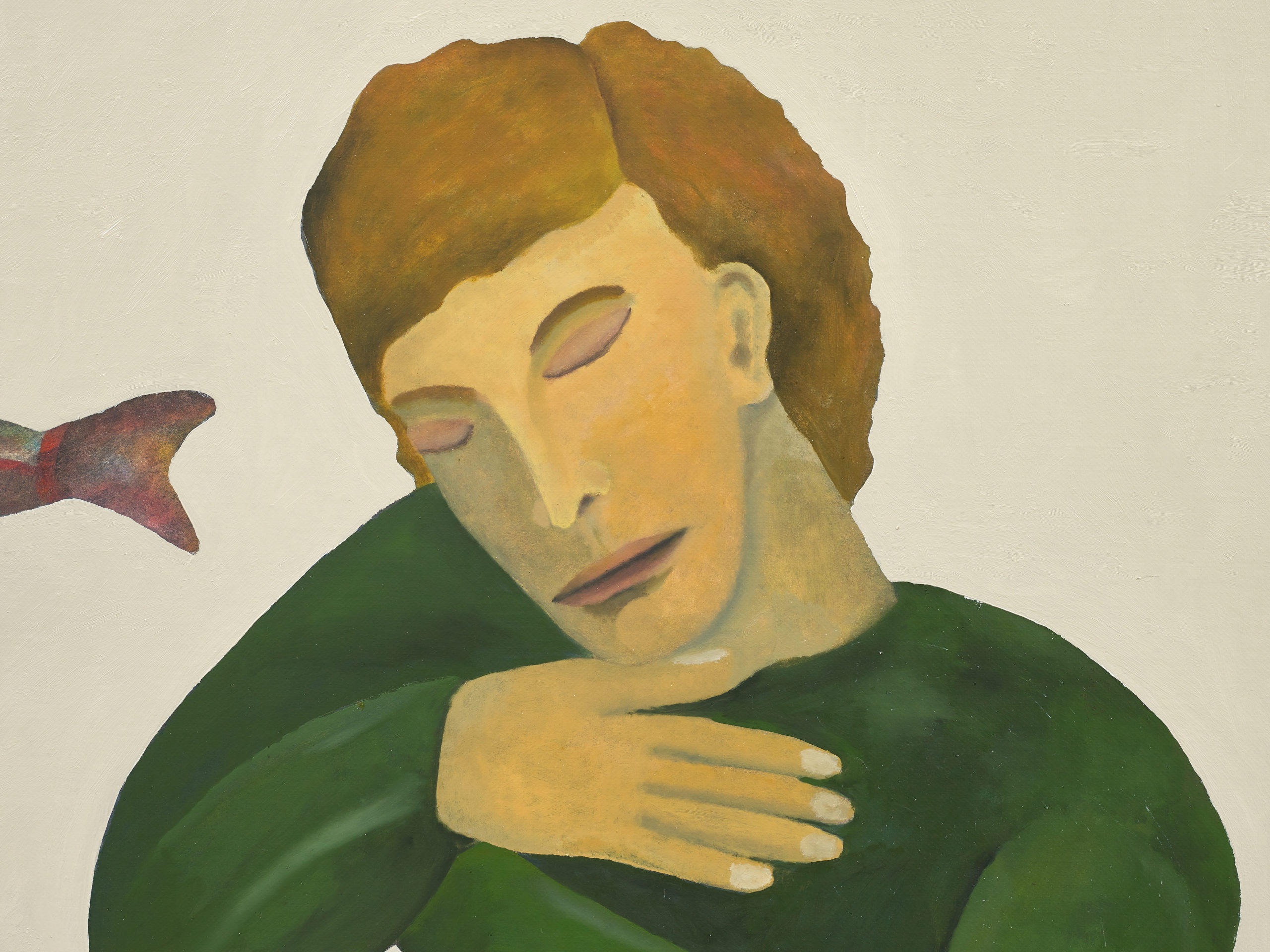
Nathalie Du Pasquier, Aspetta la nave (detail), 1987 – 2021, oil on canvas, 141,6 x 129,5 cm
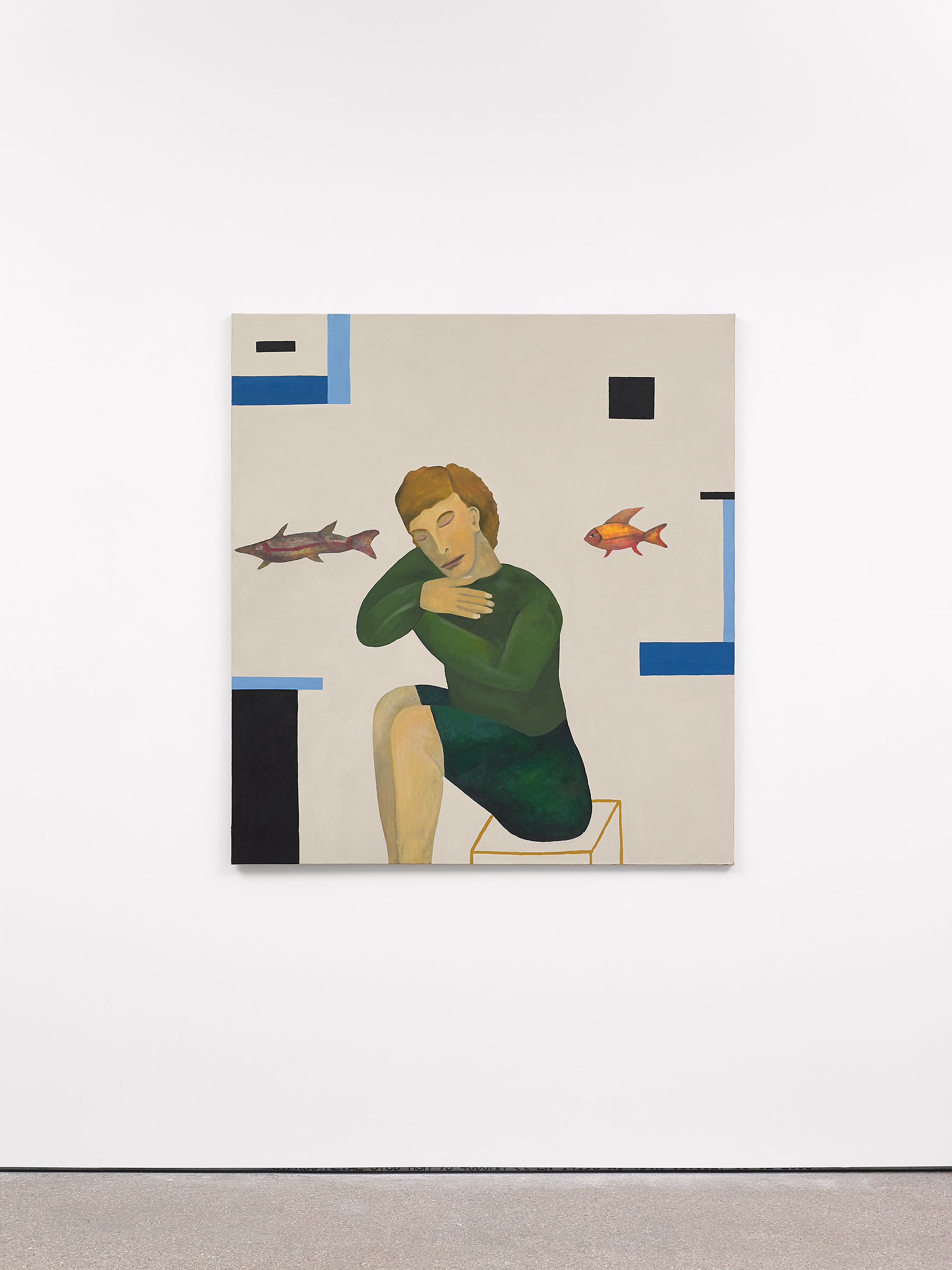

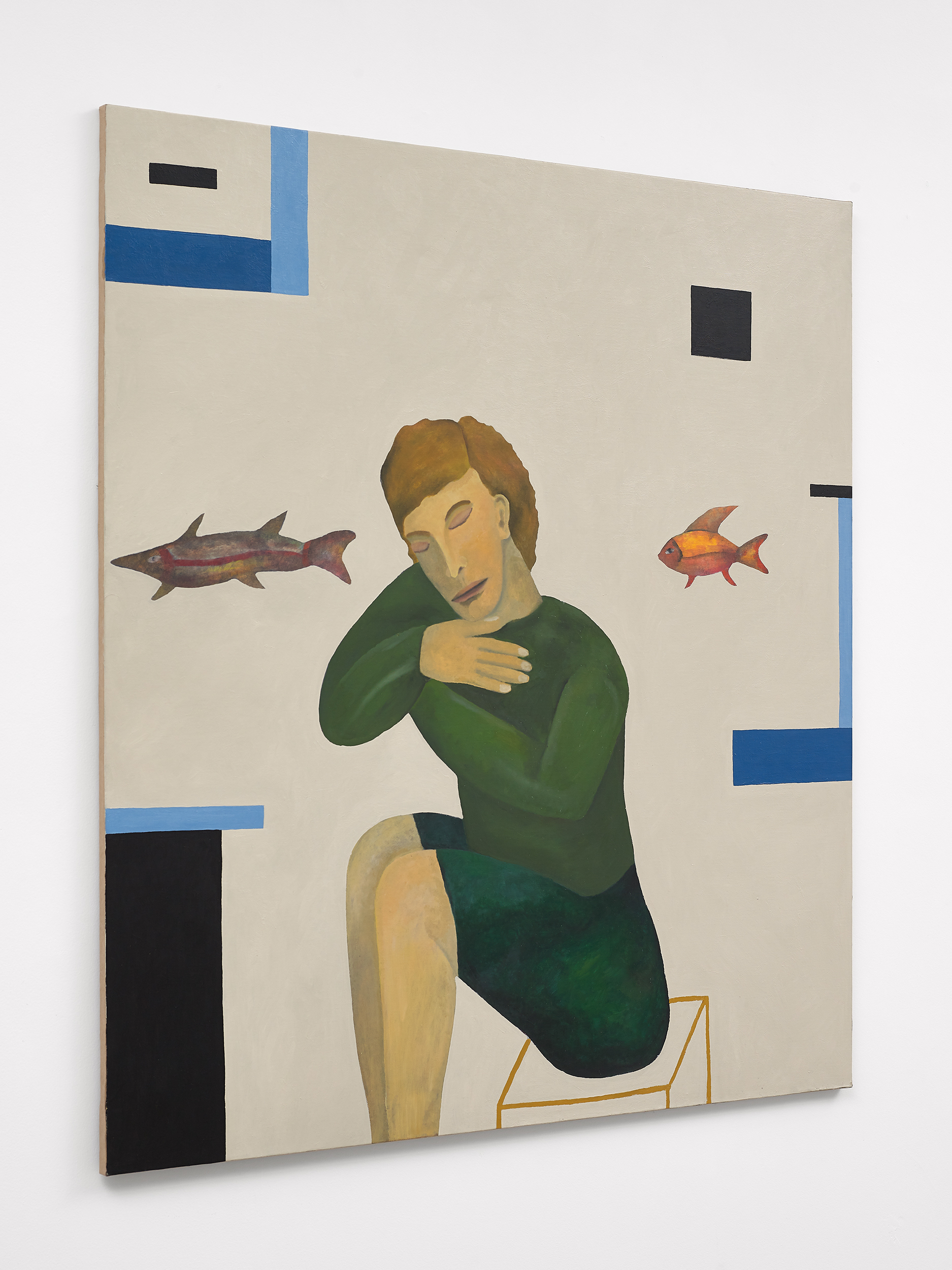
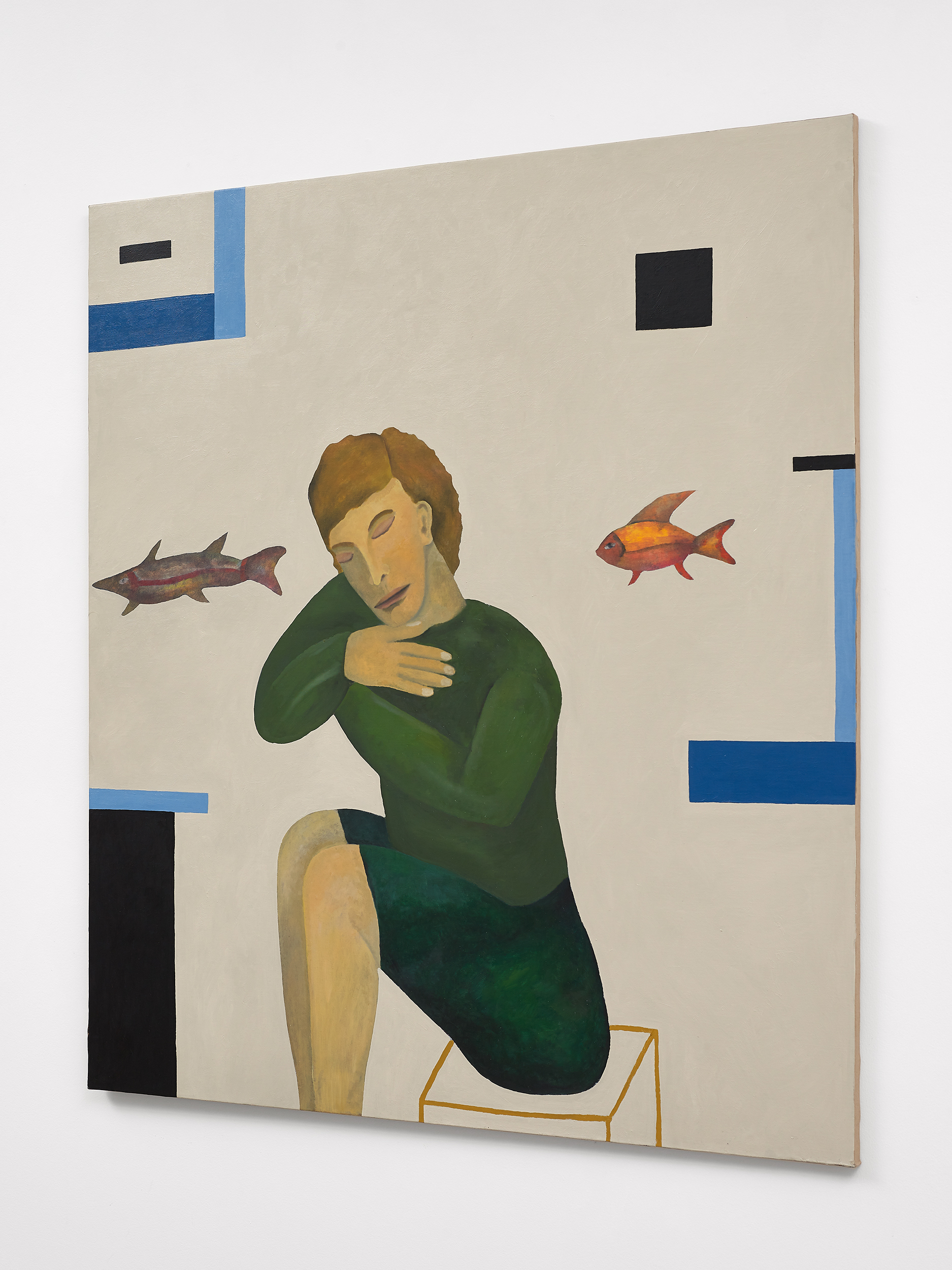
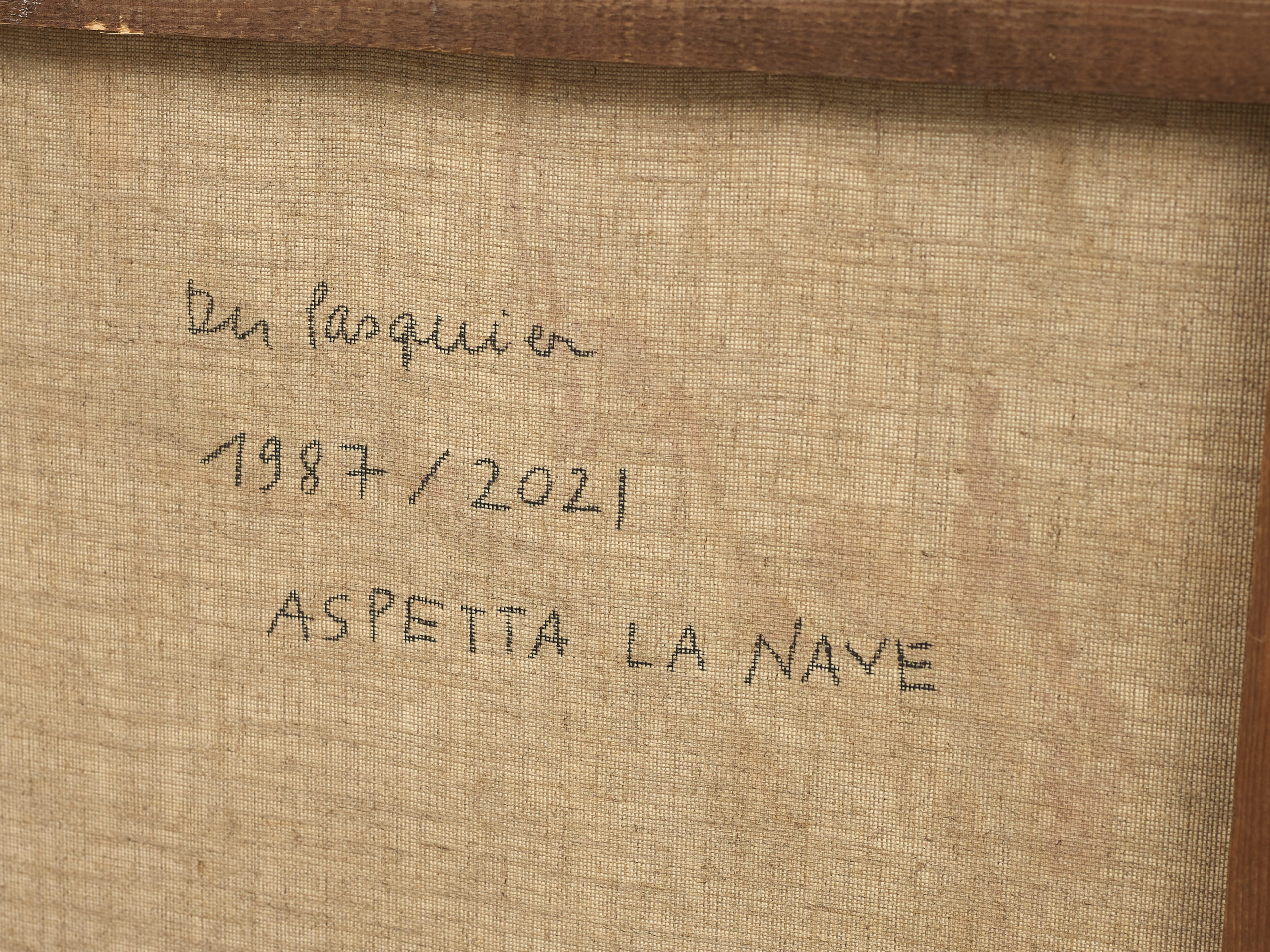
Looking back to all the works Du Pasquier has produced, there is a visible split between those made up until 1997, and those that came after. In the first paintings, thought they depict objects, nature is the protagonist. From 2000 onward the paintings become more geometric.
“That is because I changed my studio. In 1997 I moved into the place where I still work today. Before I had a much smaller studio, with less light, and I think that influenced the work. In any case, the paintings with characters, animals and nature vanished quite early on. Almost immediately, I concentrated on the themes that have always interested me: the relationships between things, the spaces that objects inhabit and their physical presence.”
⏤ Nathalie Du Pasquier, “Conversation with Luco Lo Pinto” in Big objects not always silent, 2017, pg. 6.
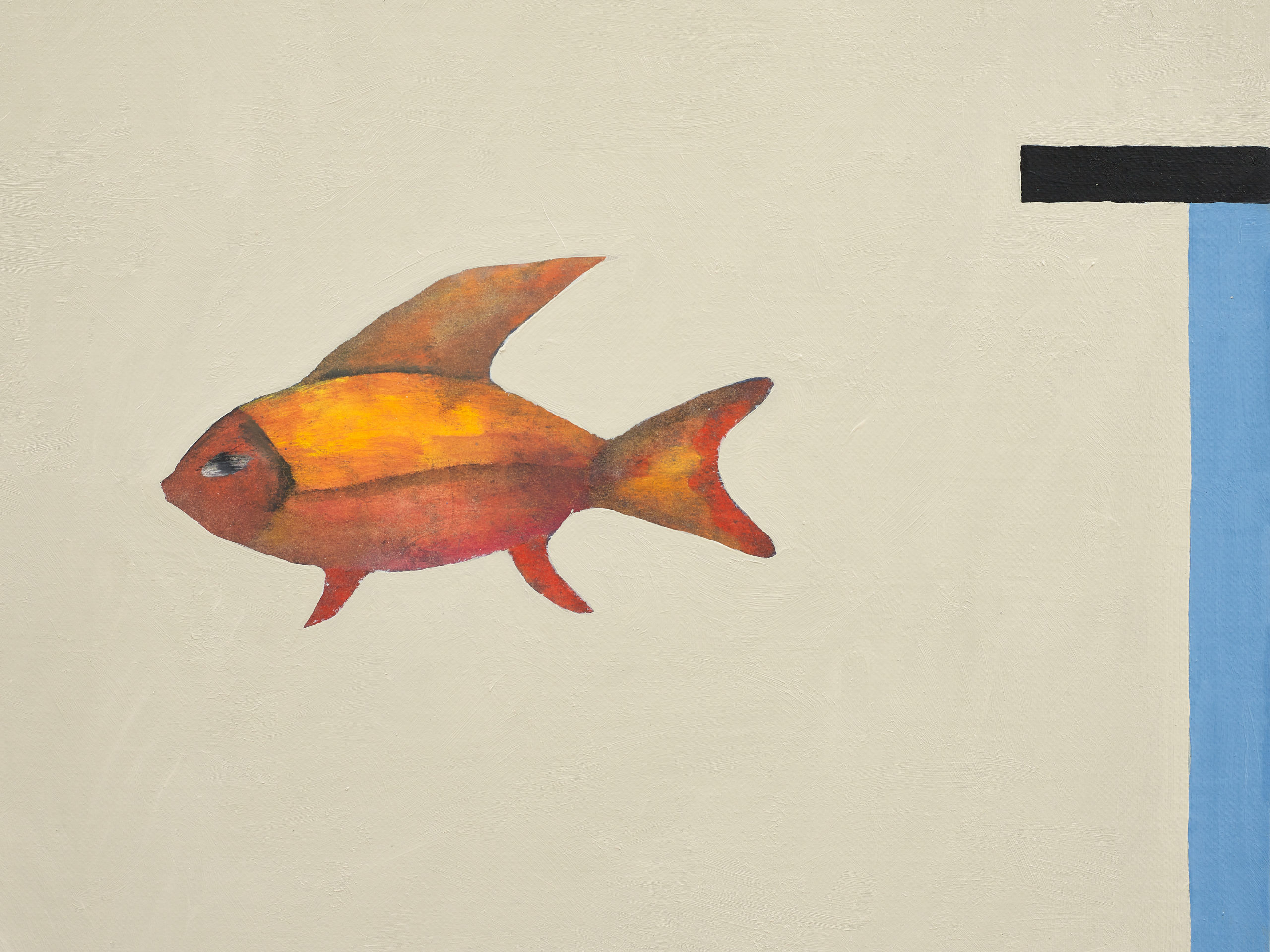
Nathalie Du Pasquier, Aspetta la nave (detail), 1987 – 2021, oil on canvas, 141,6 x 129,5 cm

Du Pasquier has been intrigued by the relationship between objects and the spaces in which they are installed. This ongoing investigation has manifested in paintings, sculptures, designs, patterns, constructions, carpets, books, and ceramics ⏤ constantly acting between the representational and non-representational, the tangible and intangible, reality and imagination, two and three-dimensional forms. Du Pasquier is open to new possibilities and experimentation, continuously playing with complex arrangements of forms.
Her research is rigorous but spontaneous, intuitive, guided by technical experiences, whether in self-produced publications, large oil paintings, small graphite drawings or totem sculptures. Often, the starting point of her investigation has a minimal distance from reality. Choreographies of ordinary objects and simplified architectural volumes occupy a large part of her world and a meticulous analysis of their rhythm, contours, reflections, relations, transforms them into icons.

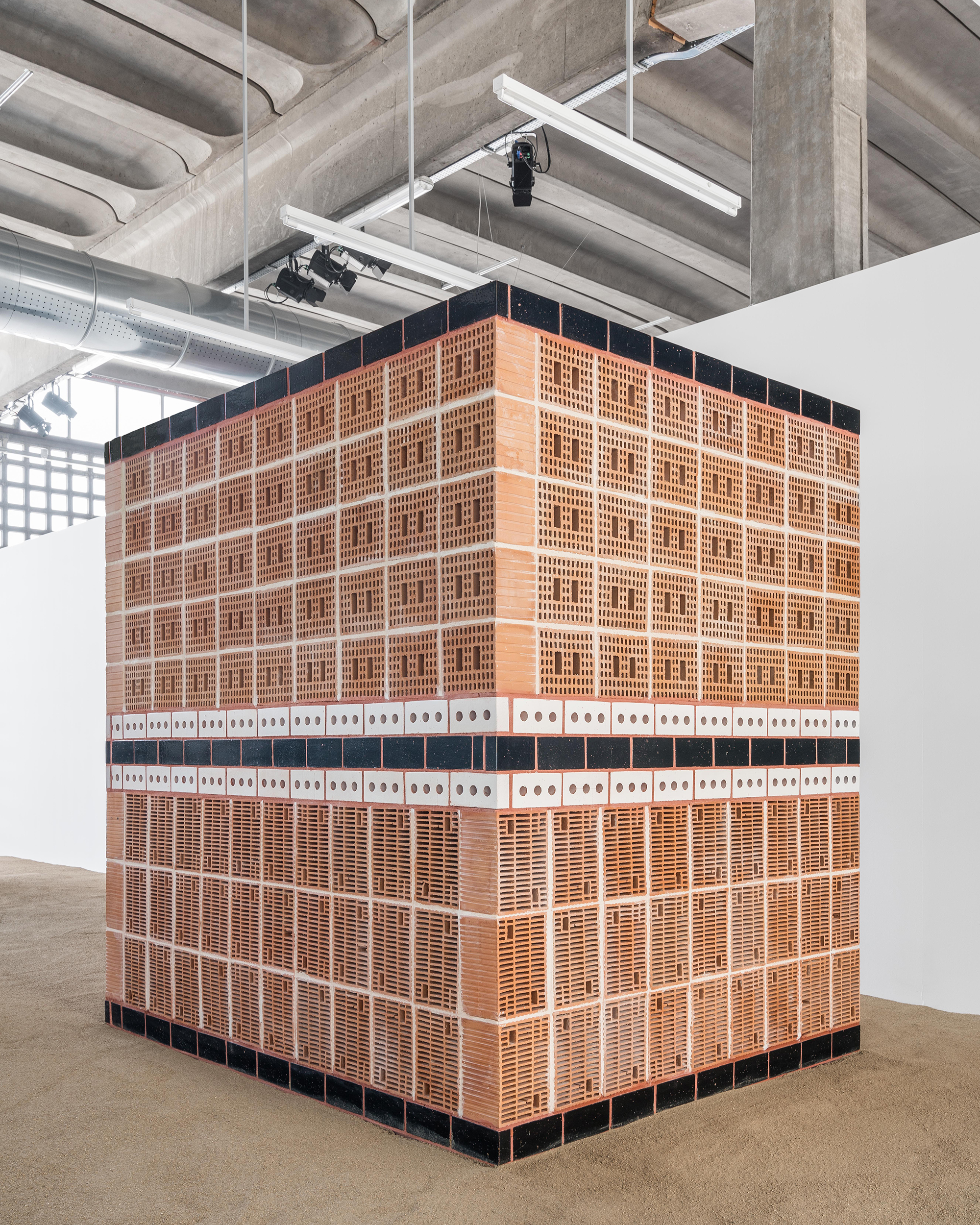
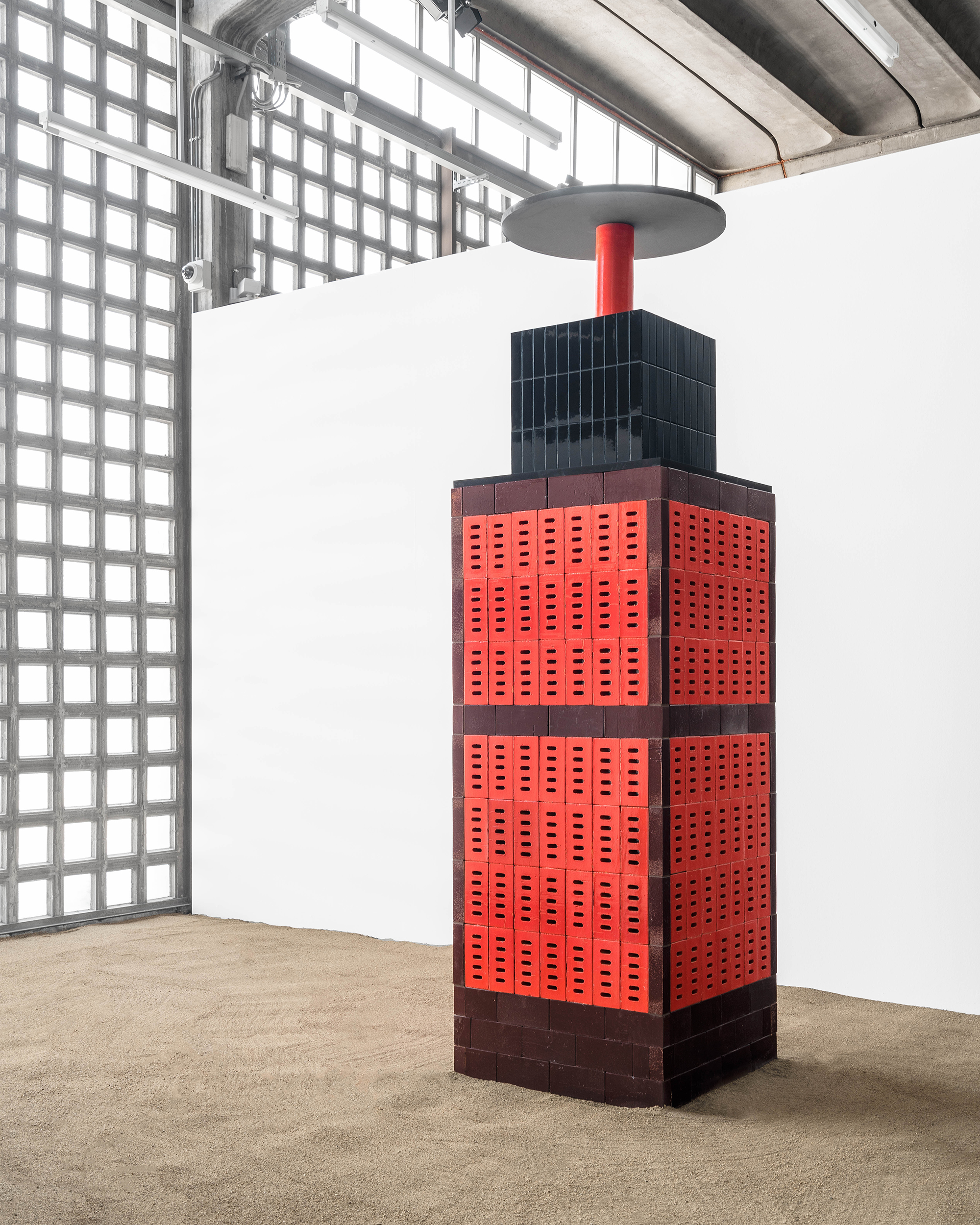
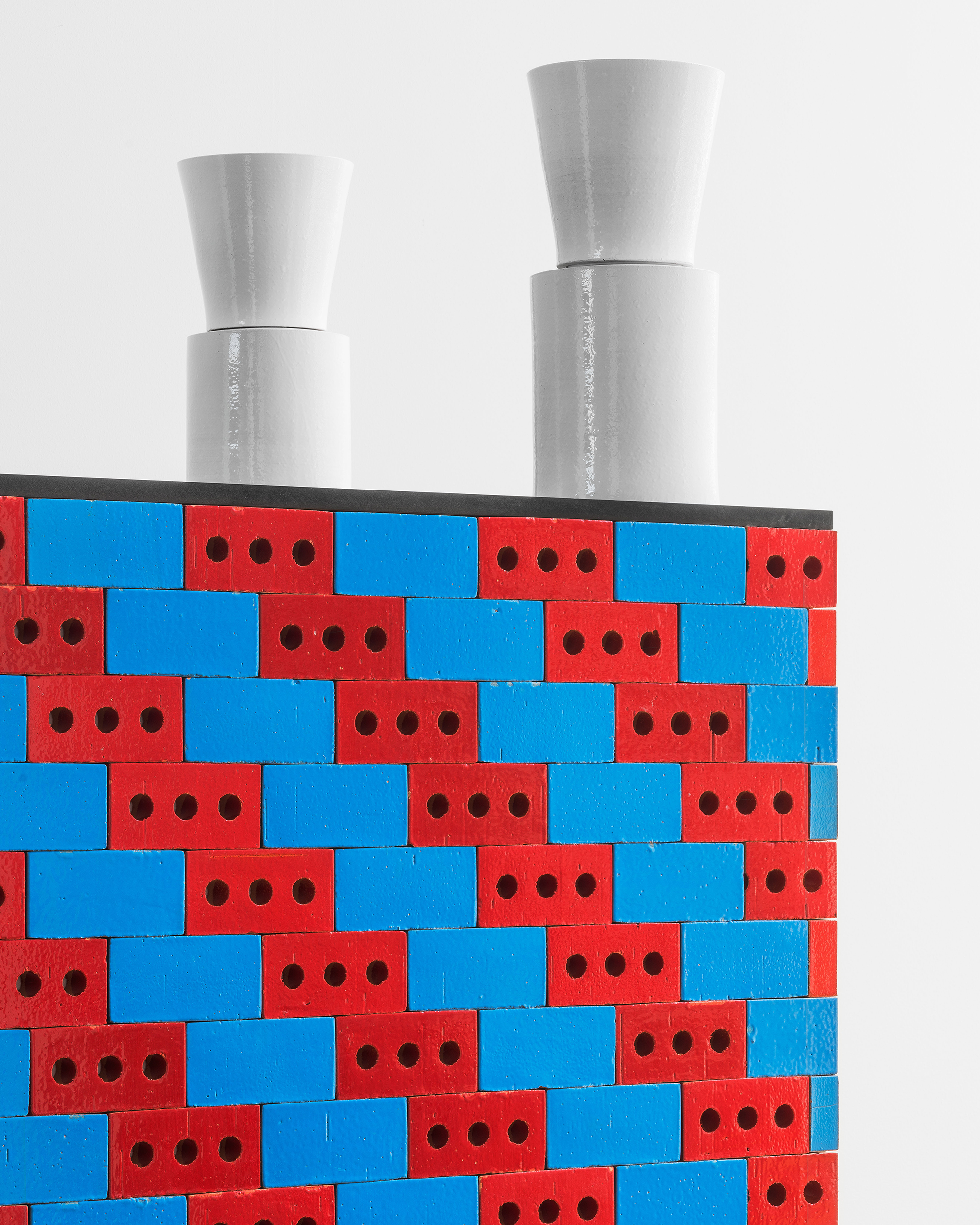
Nathalie Du Pasquier’s approach for the exhibition BRIC, crosses and seamlessly blends art, design and display, not as categories but as entities that converge in an artistic oeuvre free of strategies or rankings.
Inside Angelo Mangiarotti’s building, Du Pasquier has imagined a large installation composed of seven sculptural parts. Seven structures of different shapes and sizes that give rise to an unexpected landscape, between sculpture and architecture, giant pawns and small towers.
Fascinated by bricks, Nathalie identified different types, turned them upside-down, glazed them in bright hues and layered them in large sculptures placed inside the exhibition space. The bricks lose their structural virtues and become decorative modules of a pattern that suggests the visual mechanism of the ceramic tiles produced by Mutina.

Installation view, Nathalie Du Pasquier: Other Rooms, Camden Arts Centre, London, 2018
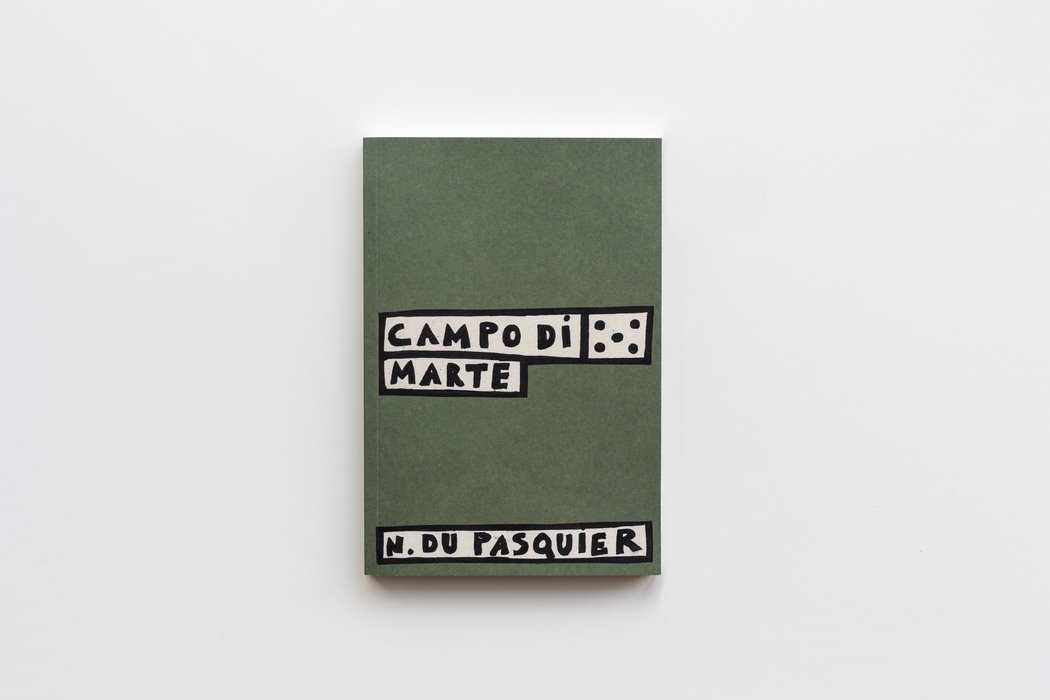
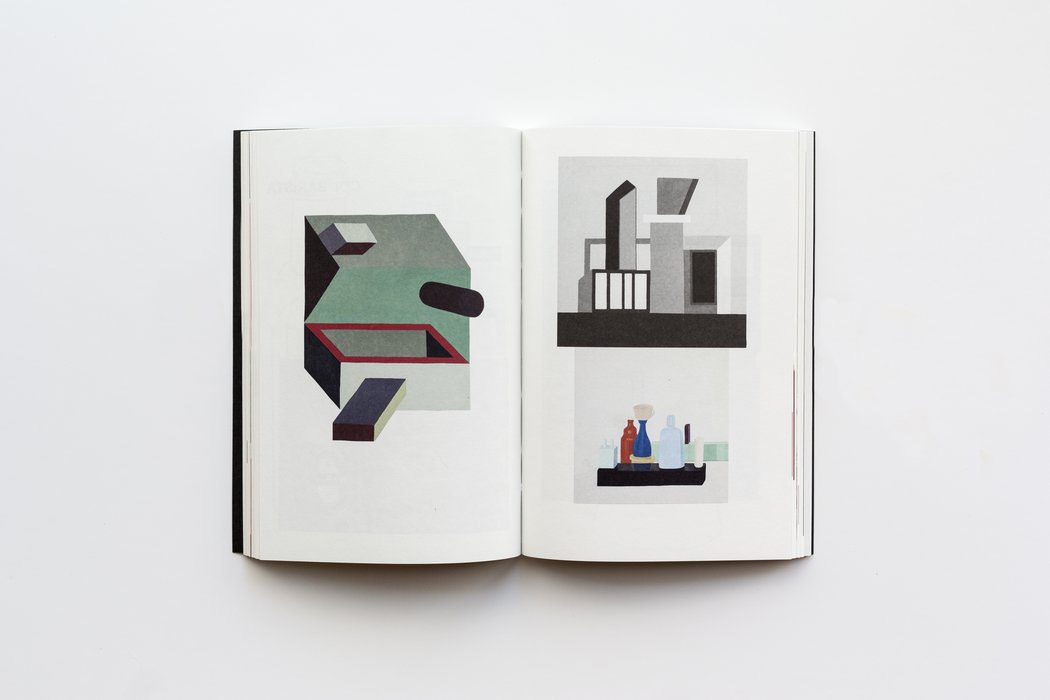
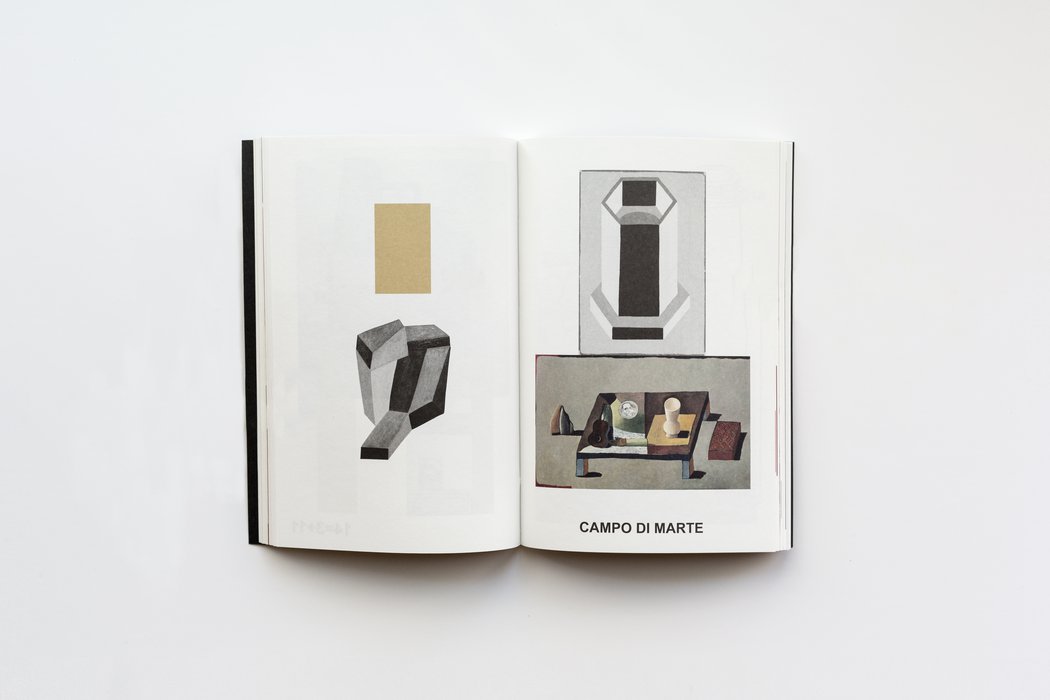

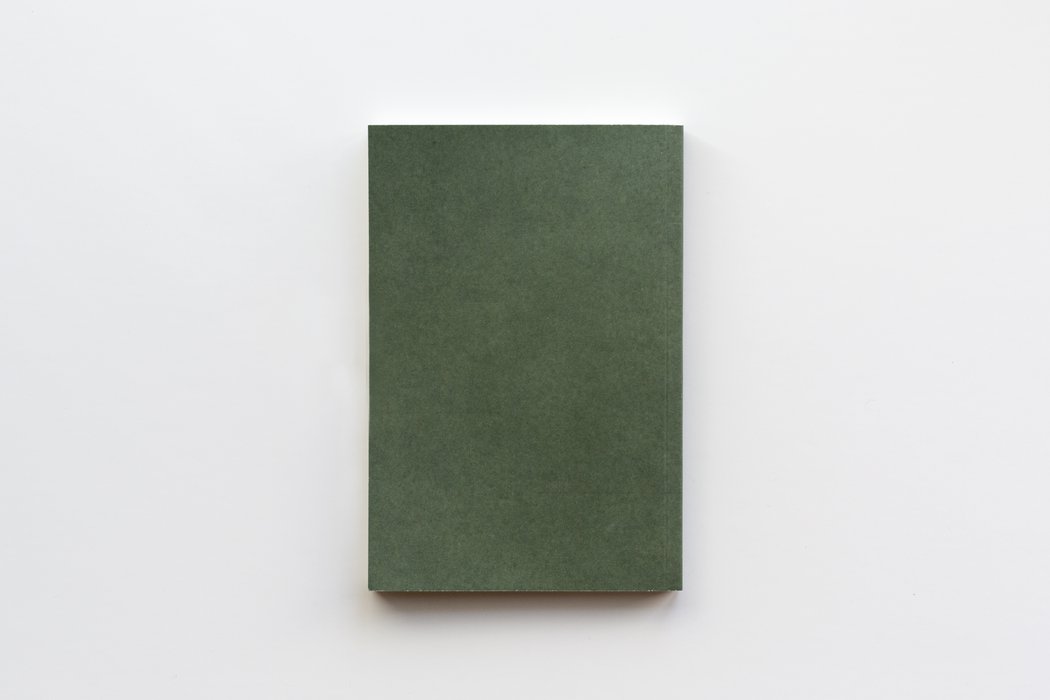
Campo di Marte was devised in March 2020, at a time when Nathalie Du Pasquier was not painting. After cutting out photos of paintings produced between the 1980s and 2020, the French artist then placed them in a sequence as if they were a series of typefaces, focusing solely on their formal qualities and the scope for interpretation offered by their assembly. What comes out is an enchanting game of nonsense, an everyday surrealism in which the images make up sentences of sorts, interwoven with various elements taken from the world of books: titles, poems or mere calculations.
Campo di Marte is also the name of an exhibition, curated by Luca Lo Pinto, held at the MACRO in Rome until June 2021. As Du Pasquier states: “The book was supposed to come out at the same time as the exhibition opening. That won’t be the case, but it doesn’t matter as they really are two separate things. This paperback is not a catalogue at all: it’s something you can browse through even while sitting in the subway.”
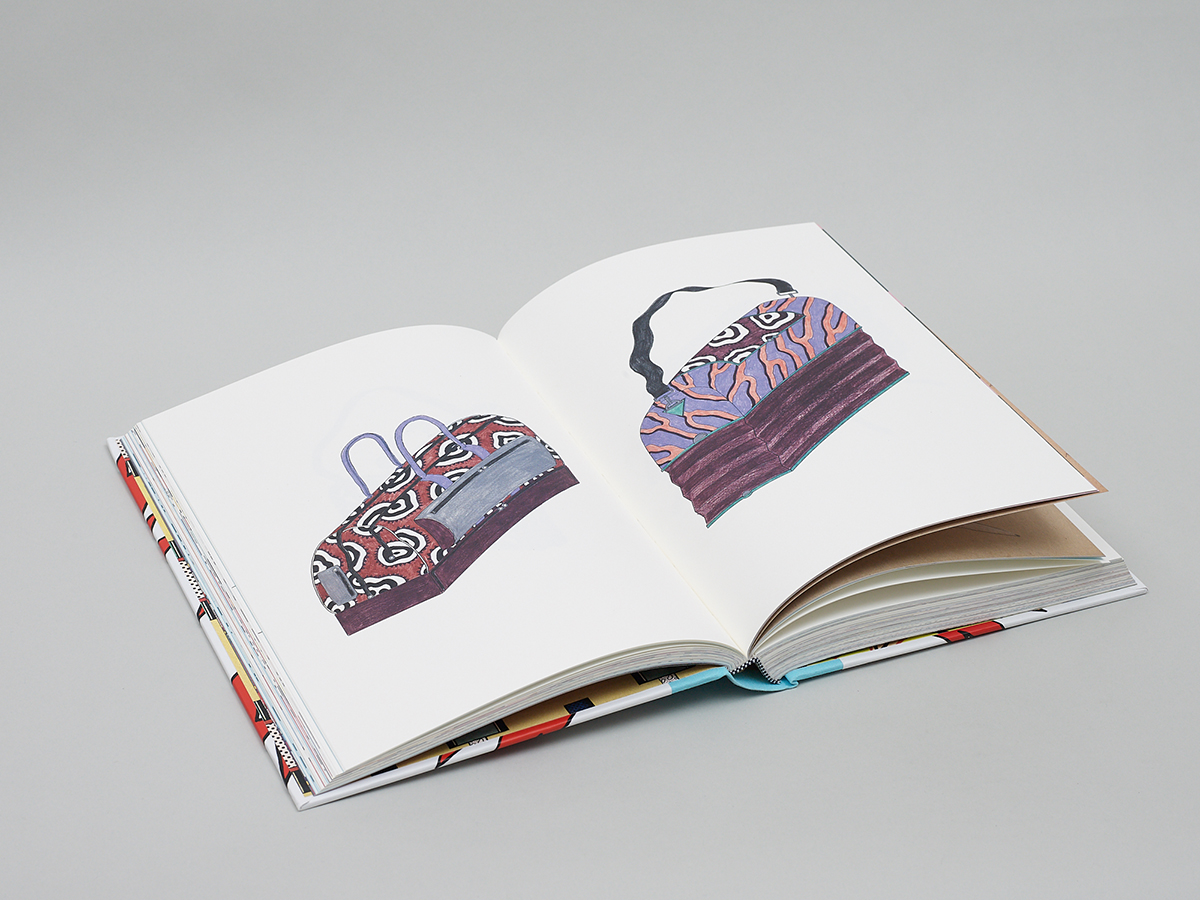
Nathalie Du Pasquier and Omar Sosa, Don’t take these drawings seriously 1981-’87, 2015

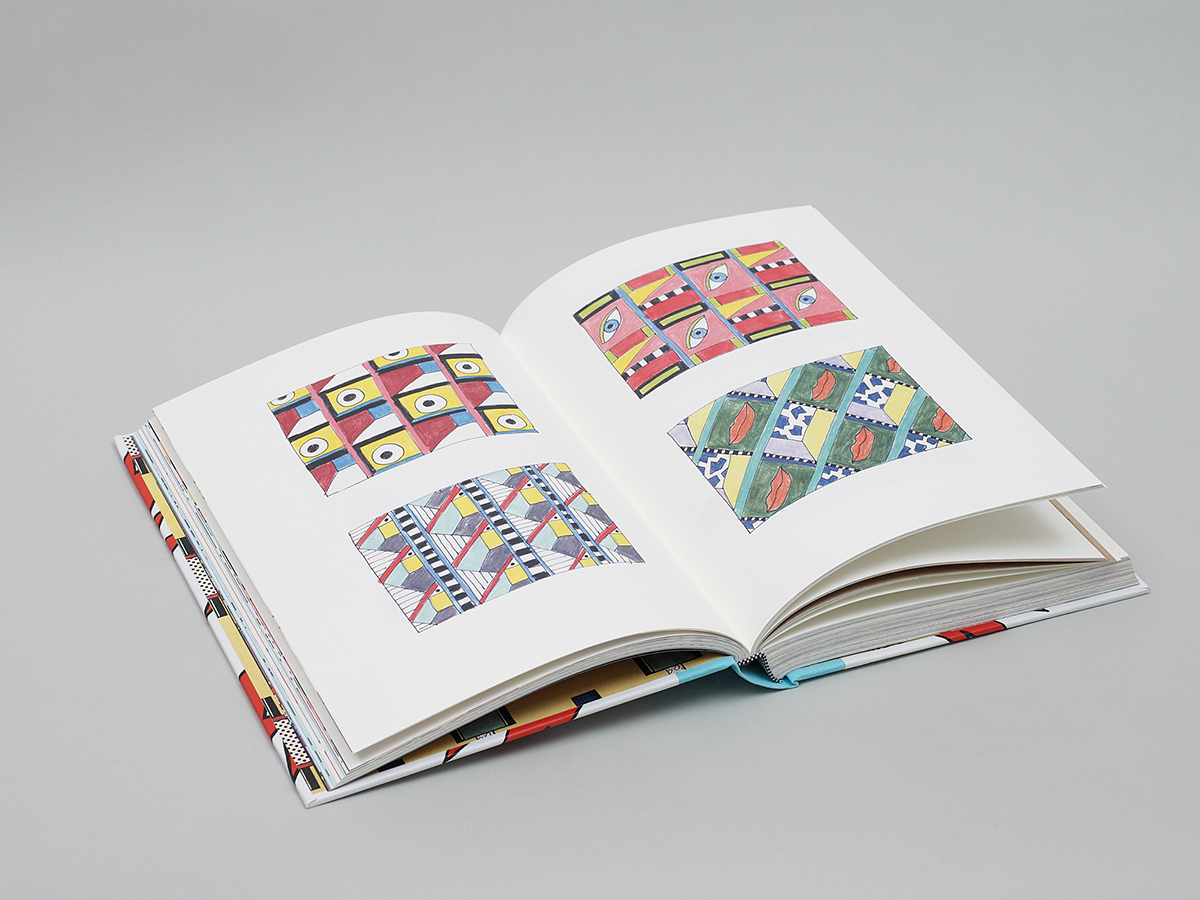

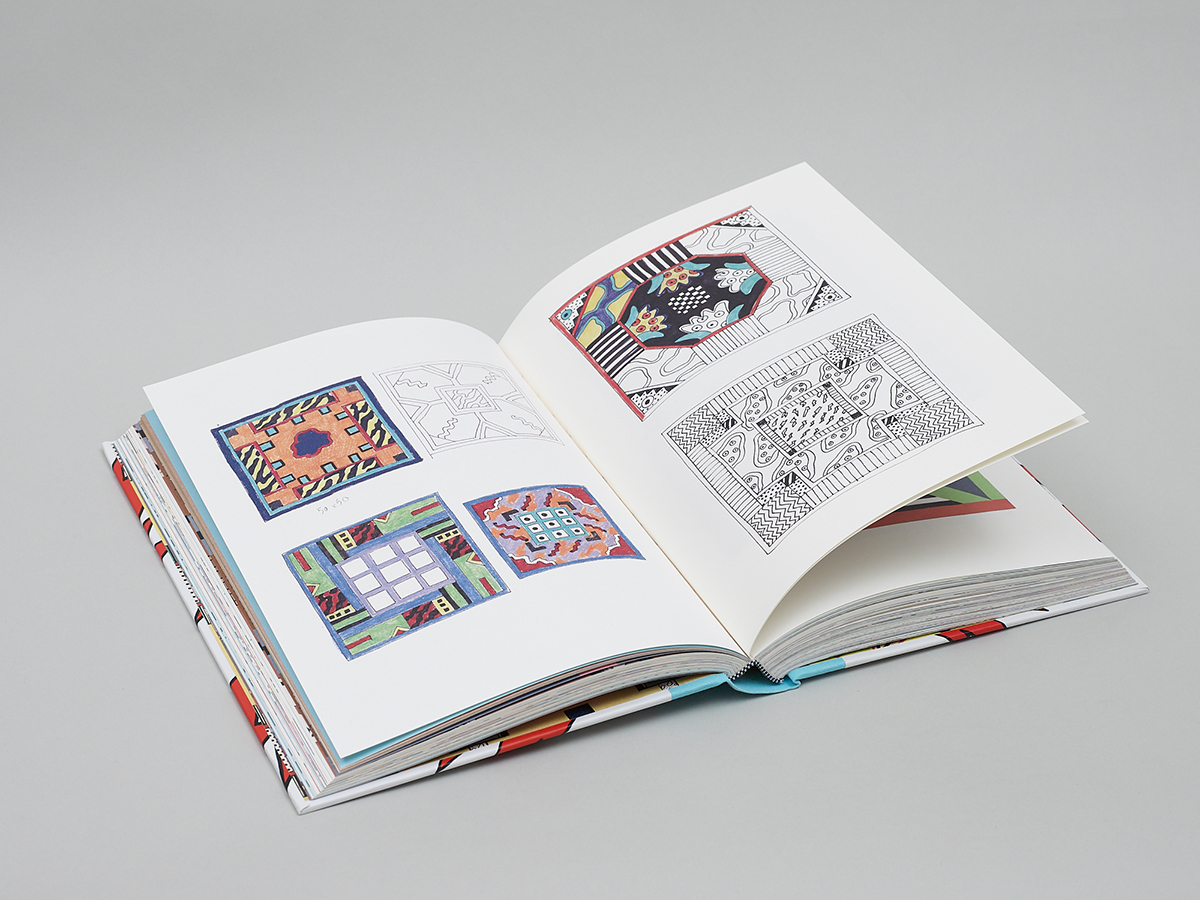
Nathalie Du Pasquier started drawing as soon as she met her husband George Sowden in 1979 in Milan. From 1981 to 1987 she didn’t stop drawing. Every day she would draw a whole new modern world, from very small items like jewelry to entire cities. This world only existed in her head but would eventually be developed into real pieces for the Memphis exhibitions.
This unique book is the first and definitive compilation of all the unpublished drawings from those years, which had been sitting in the drawers of Nathalie’s studio for over 30 years. Organized by the smallest objects to the biggest and divided into chapters, each with a text by Nathalie, it has been carefully edited and designed by Apartamento magazine’s co-founder Omar Sosa together with Nathalie Du Pasquier.
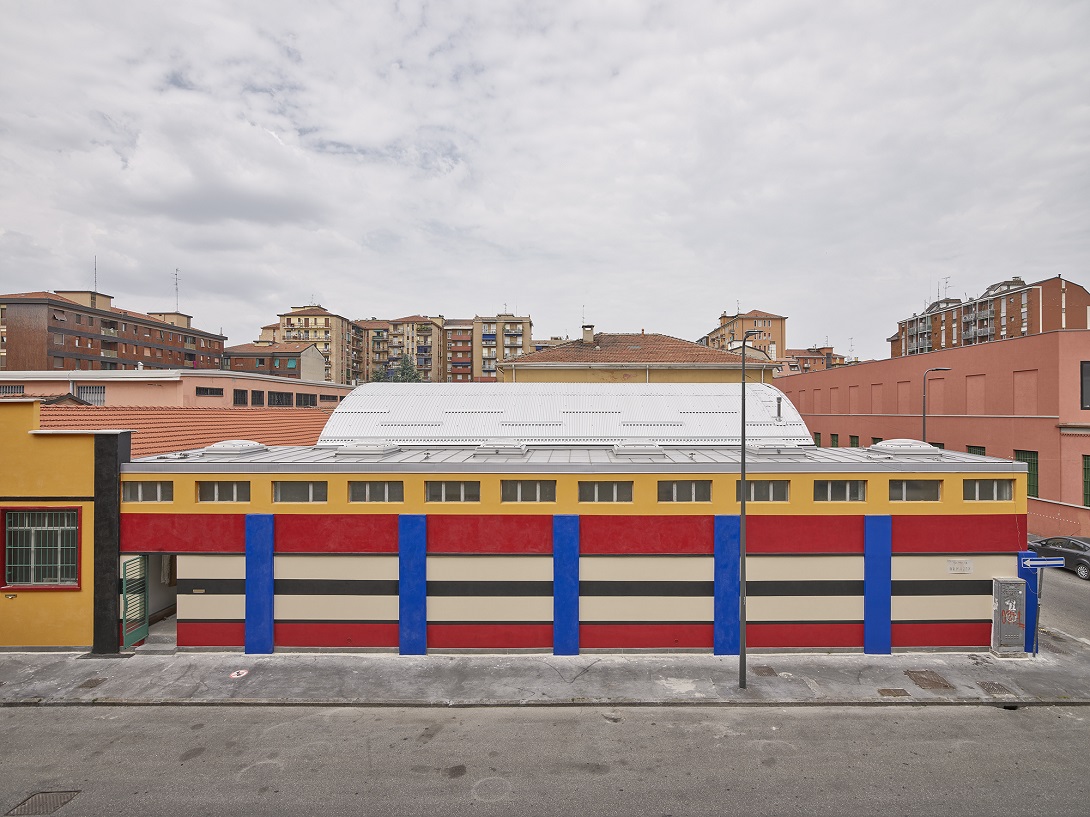
Facade of Assab One, Milano ⏤ © Giovanni Hänninen, 2020
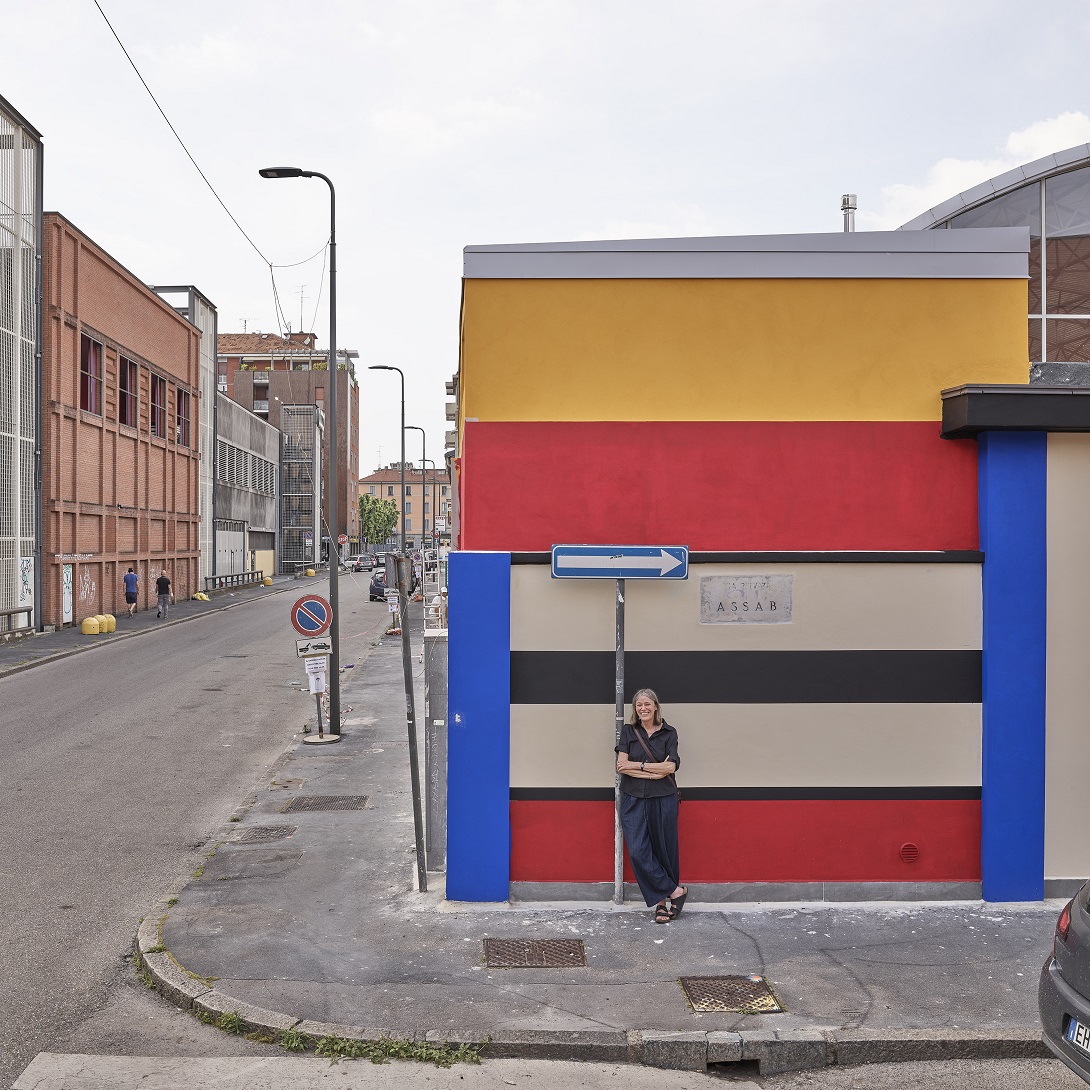
Realized in the midst of the first lockdown, “La Facciata” is a public artwork that reaches beyond the confines of momentarily closed museums and galleries. Assab One is an art center in Milan, and a platform that aims to facilitate the production and exhibition of art in a neighborhood known to be difficult.
This 45 meters long mural radically alters the scenery of the neighborhood and is Du Pasquier’s largest mural to date.
This 45 meters long mural radically alters the scenery of the neighborhood and is Du Pasquier’s largest mural to date.